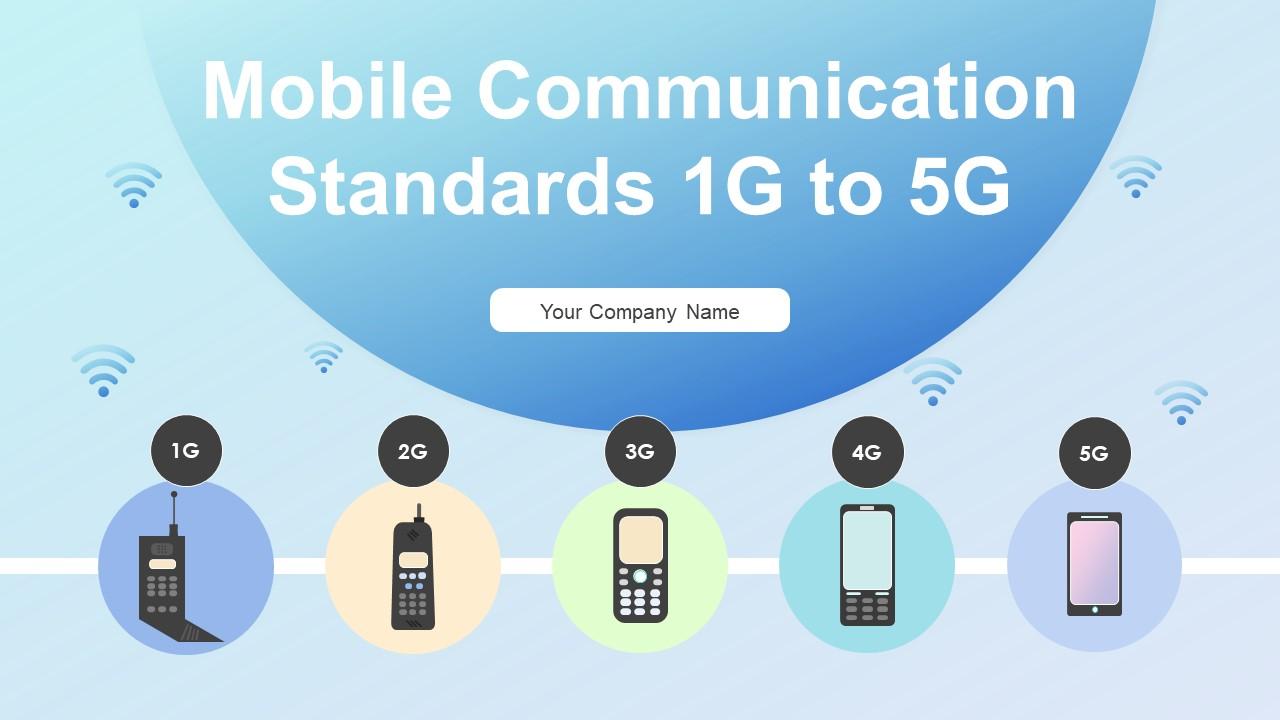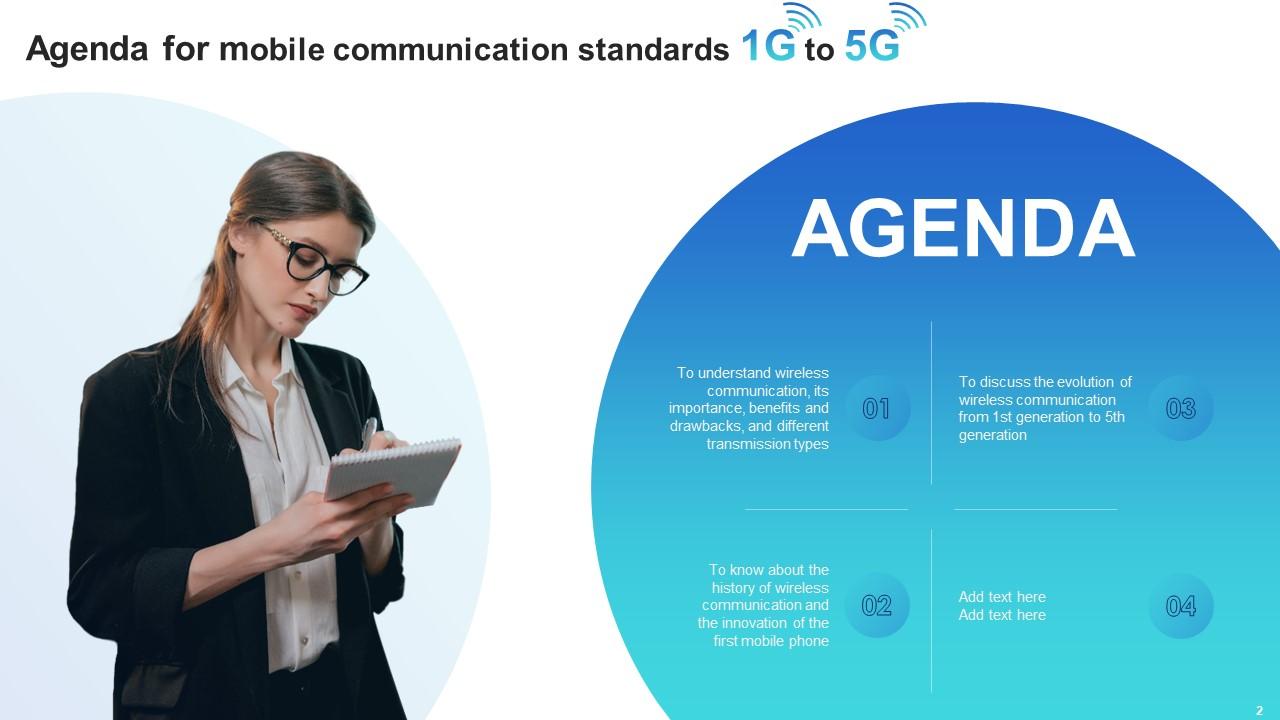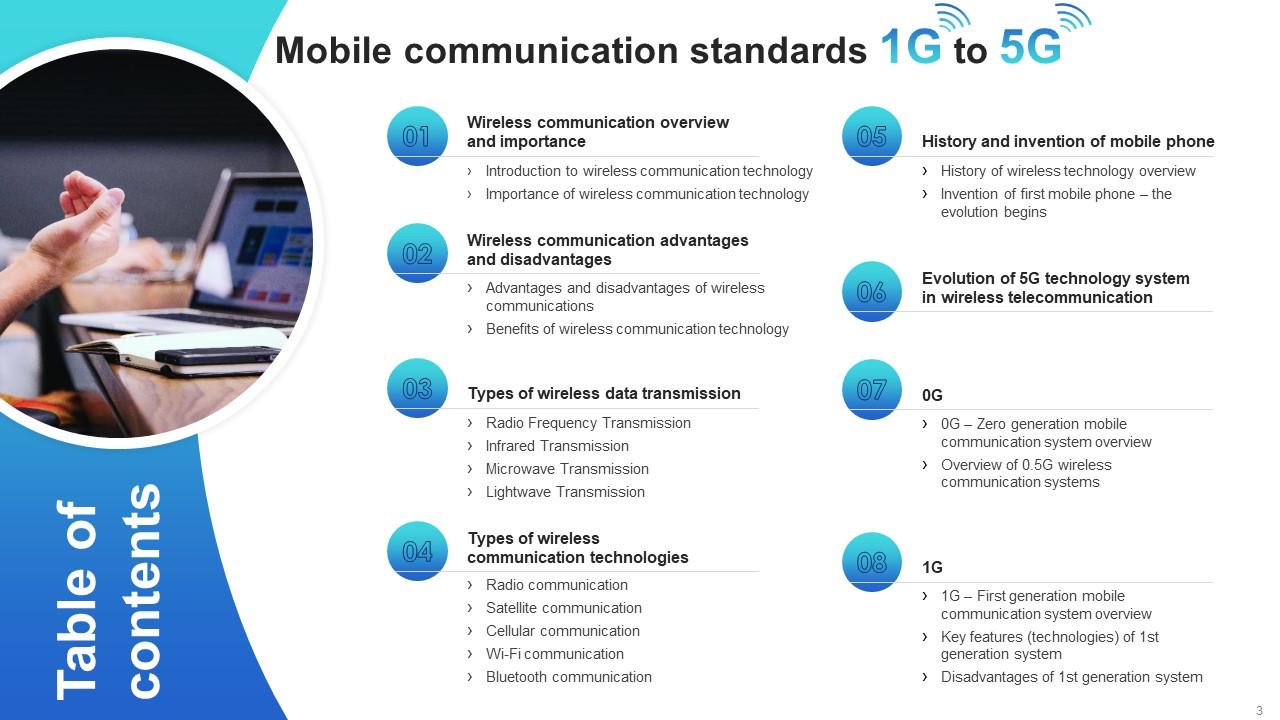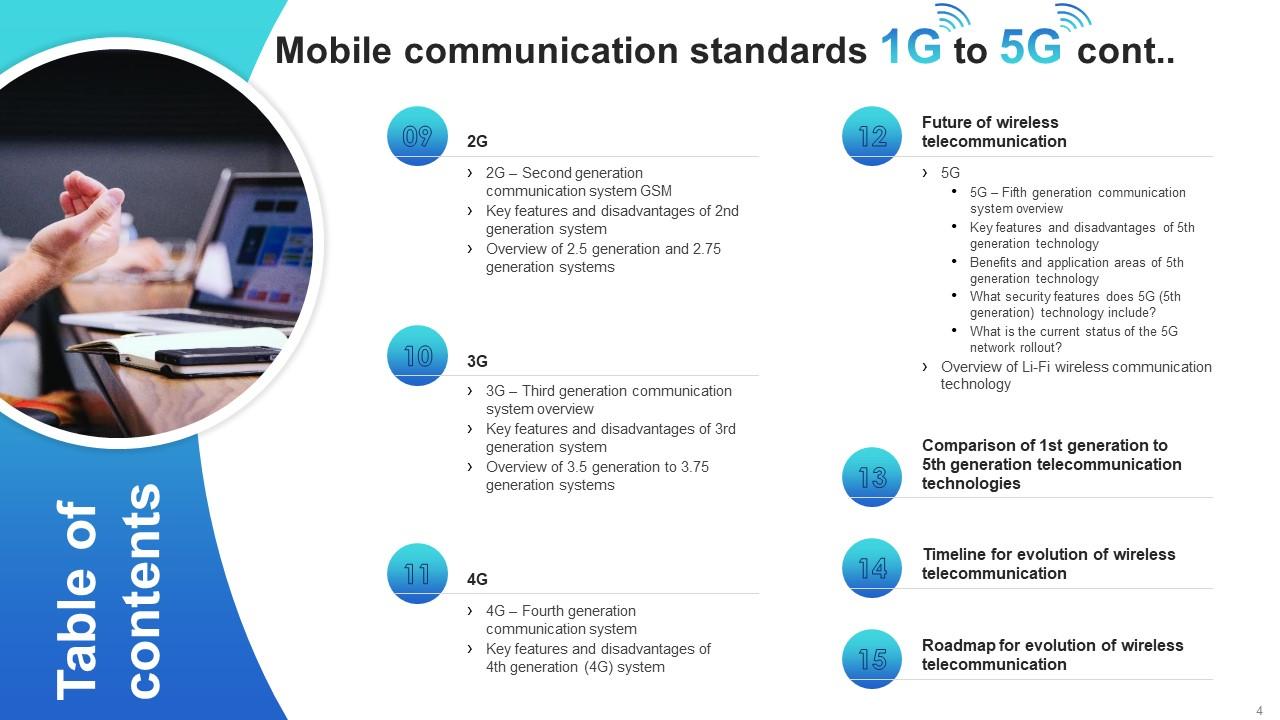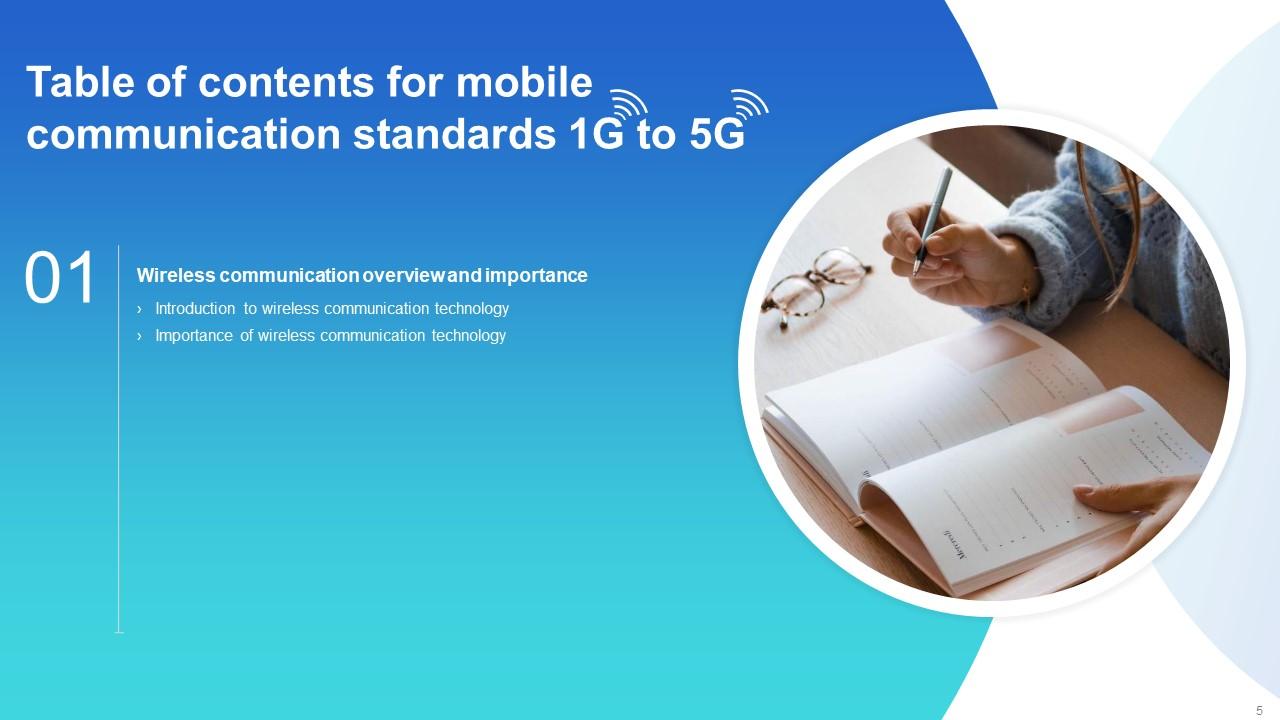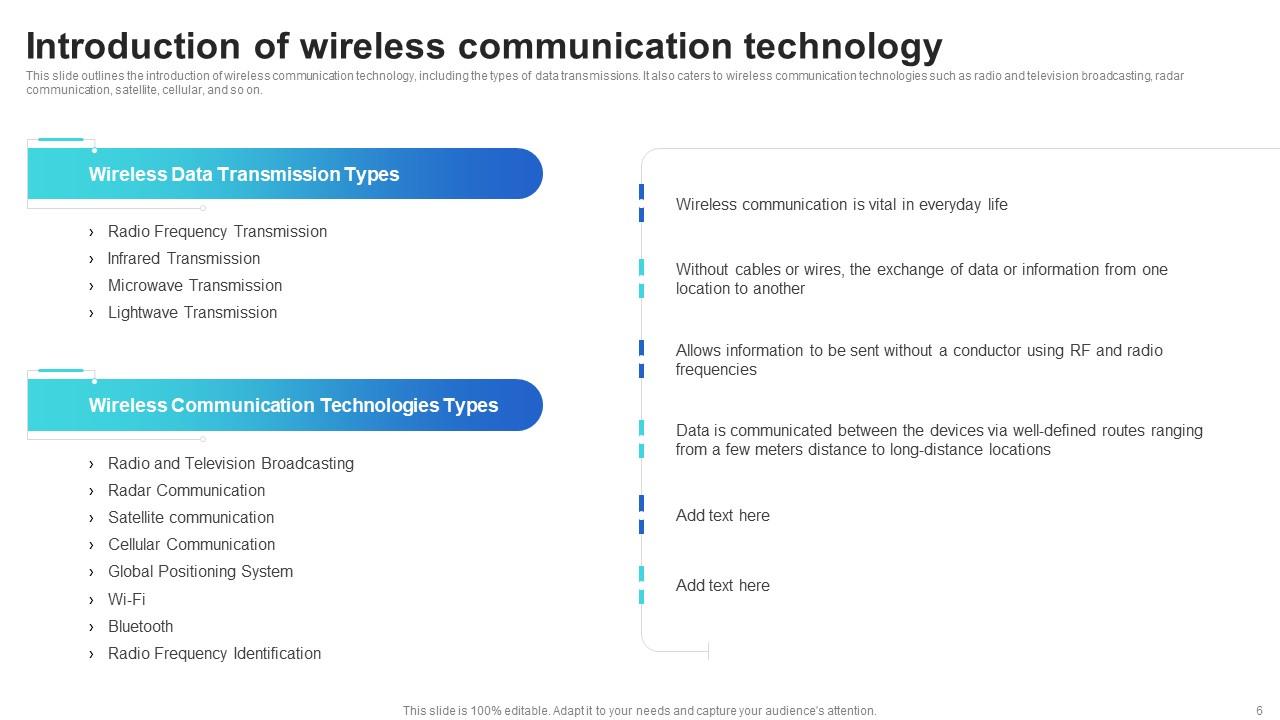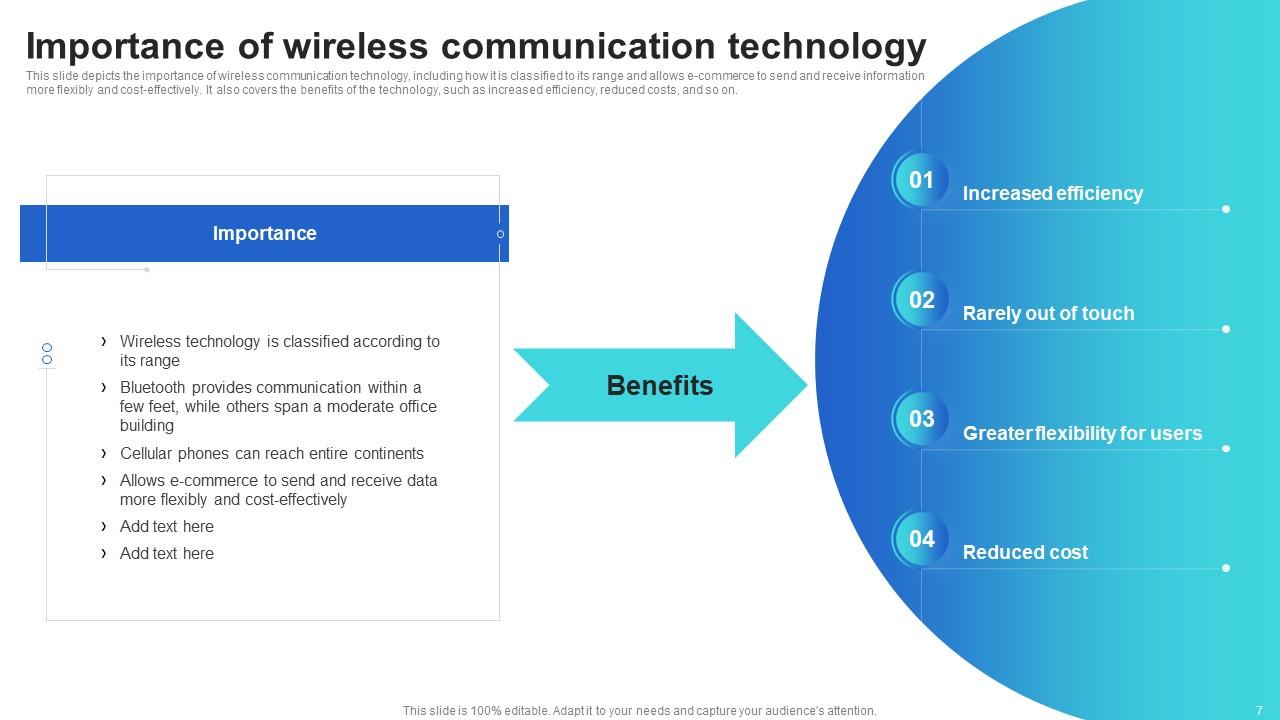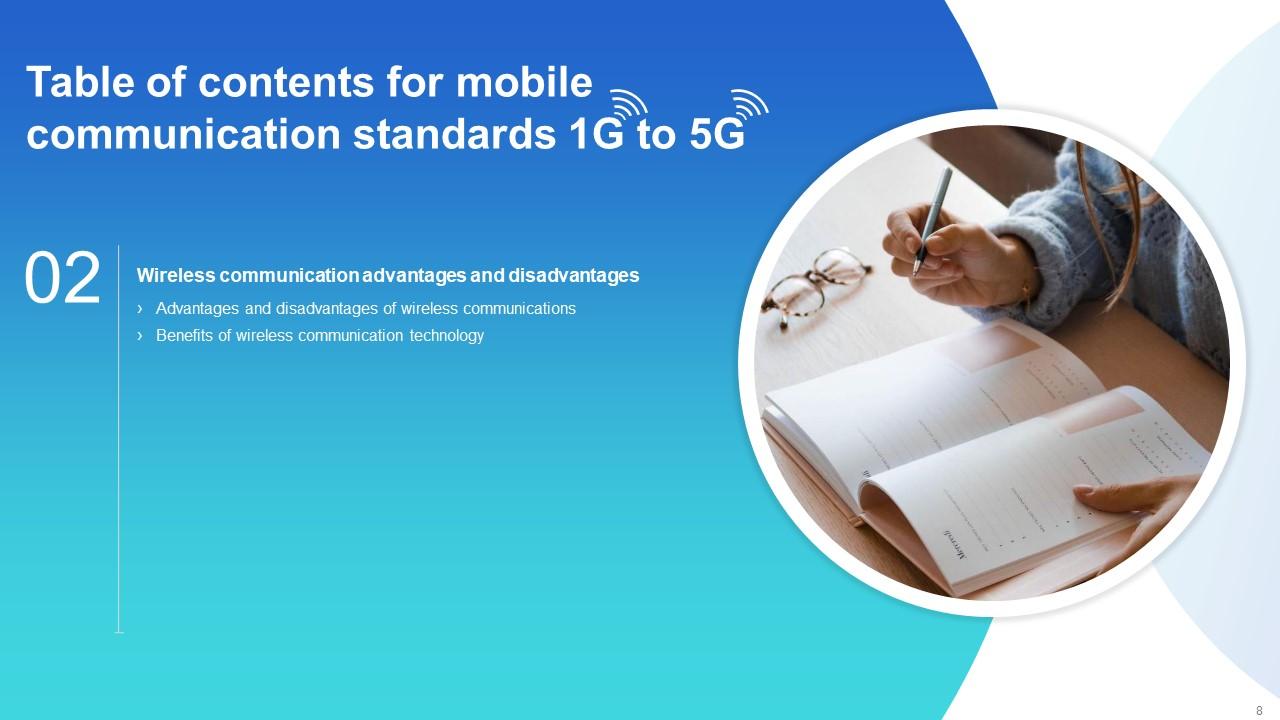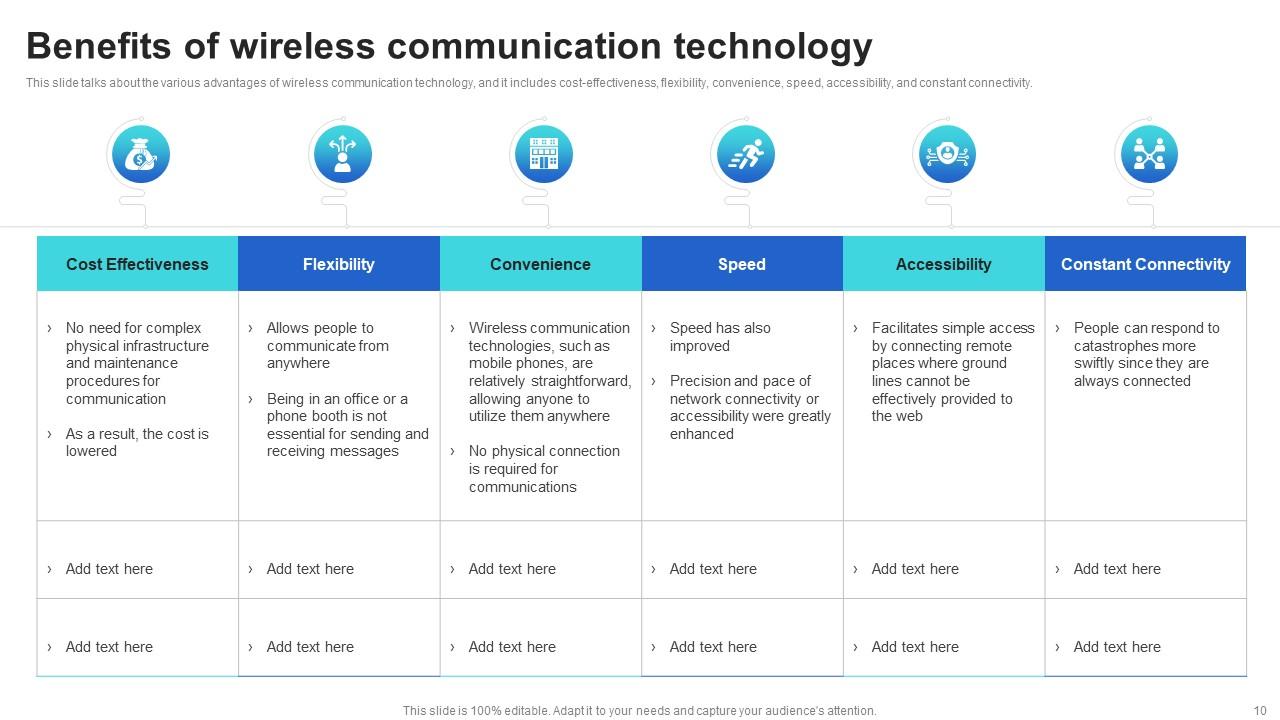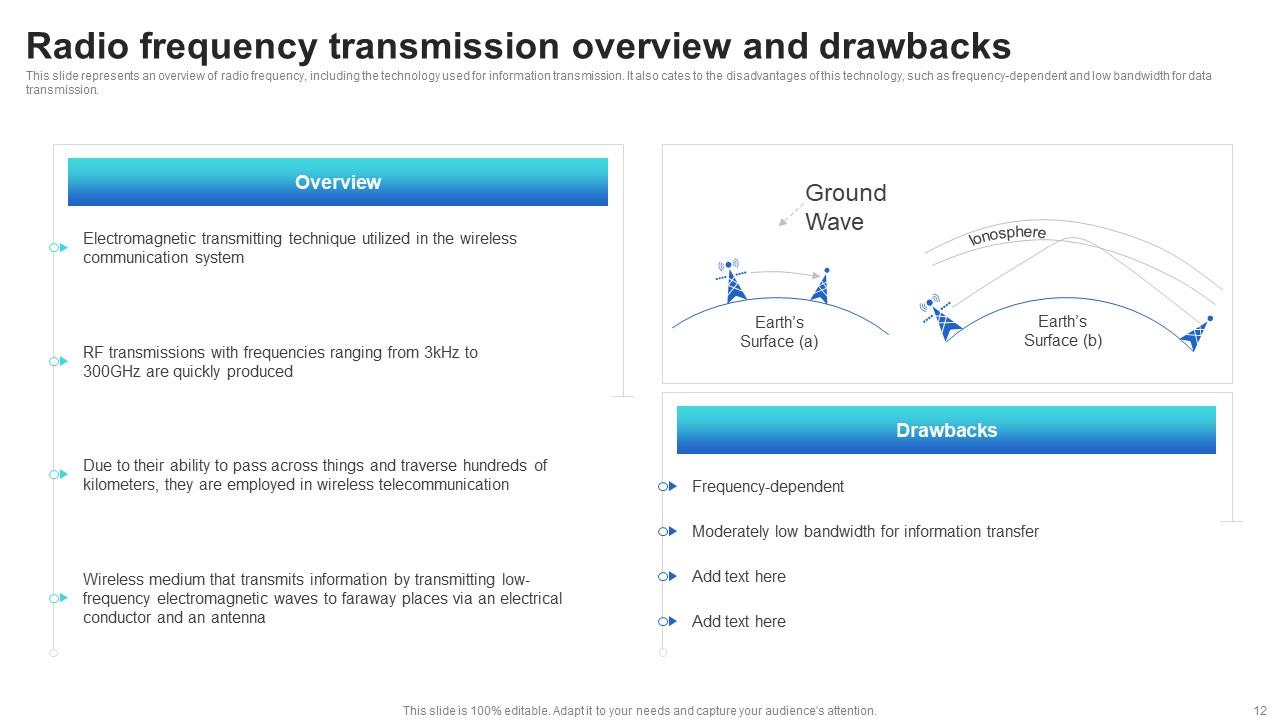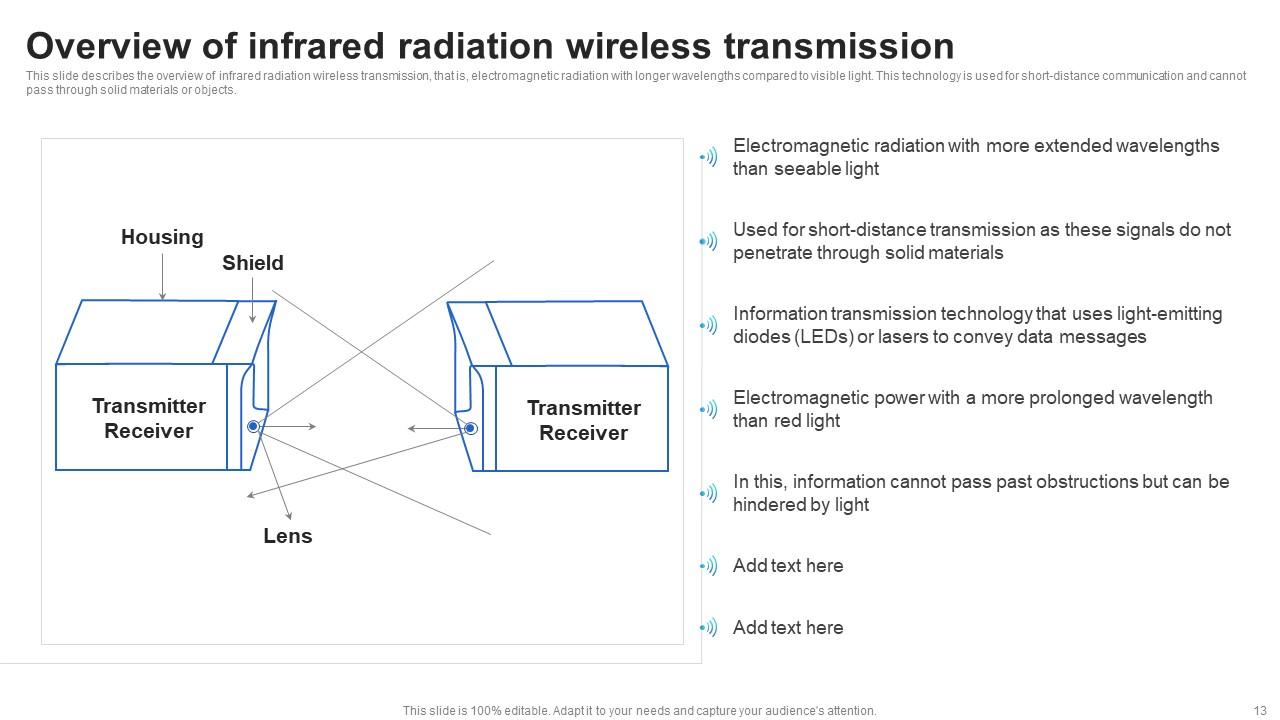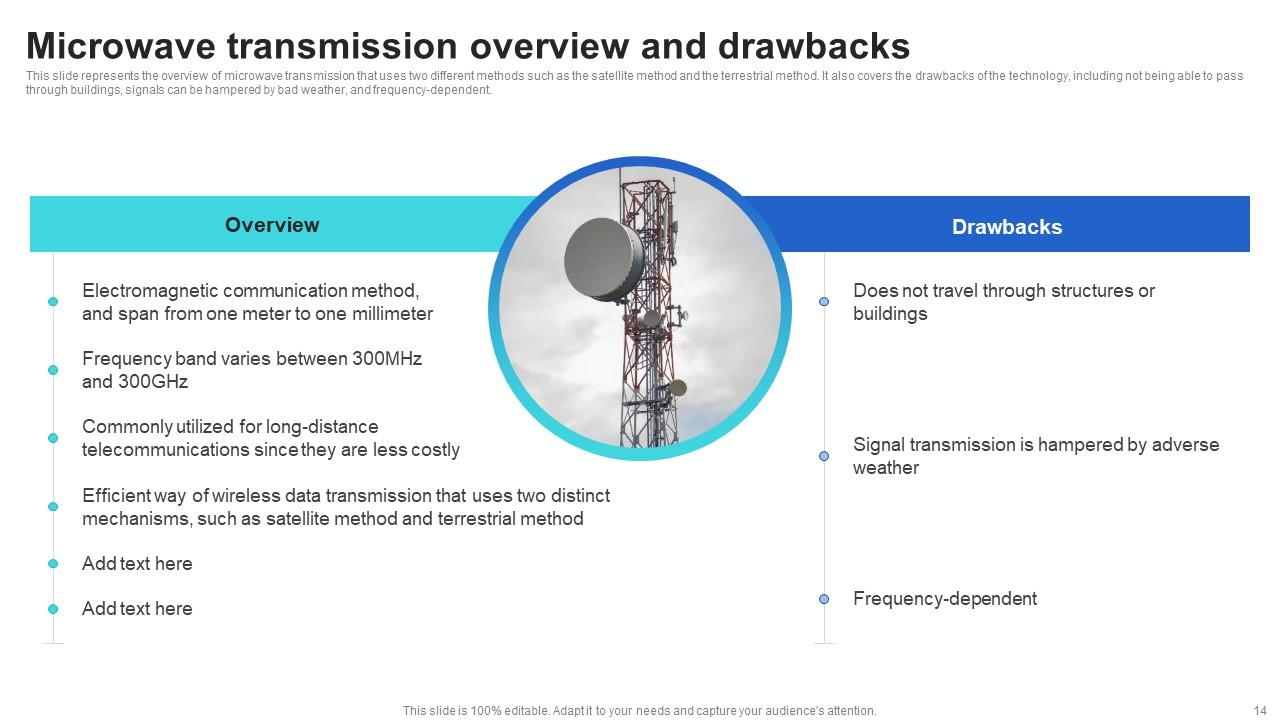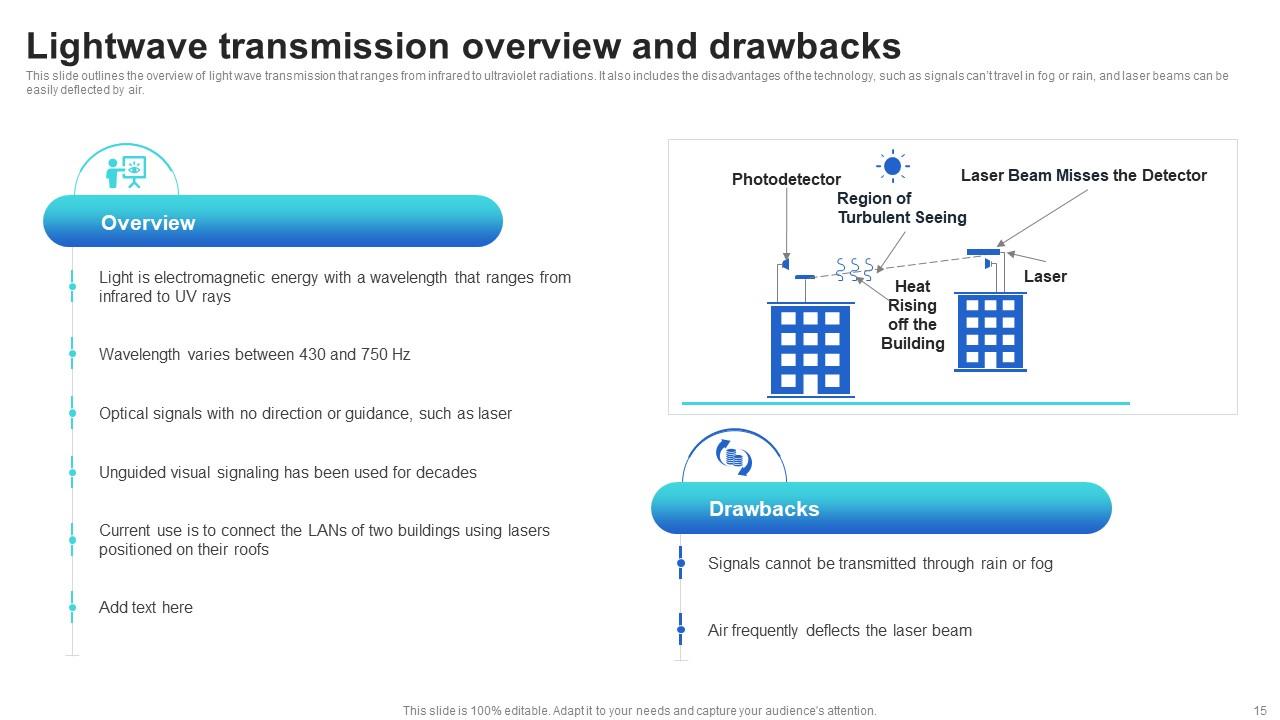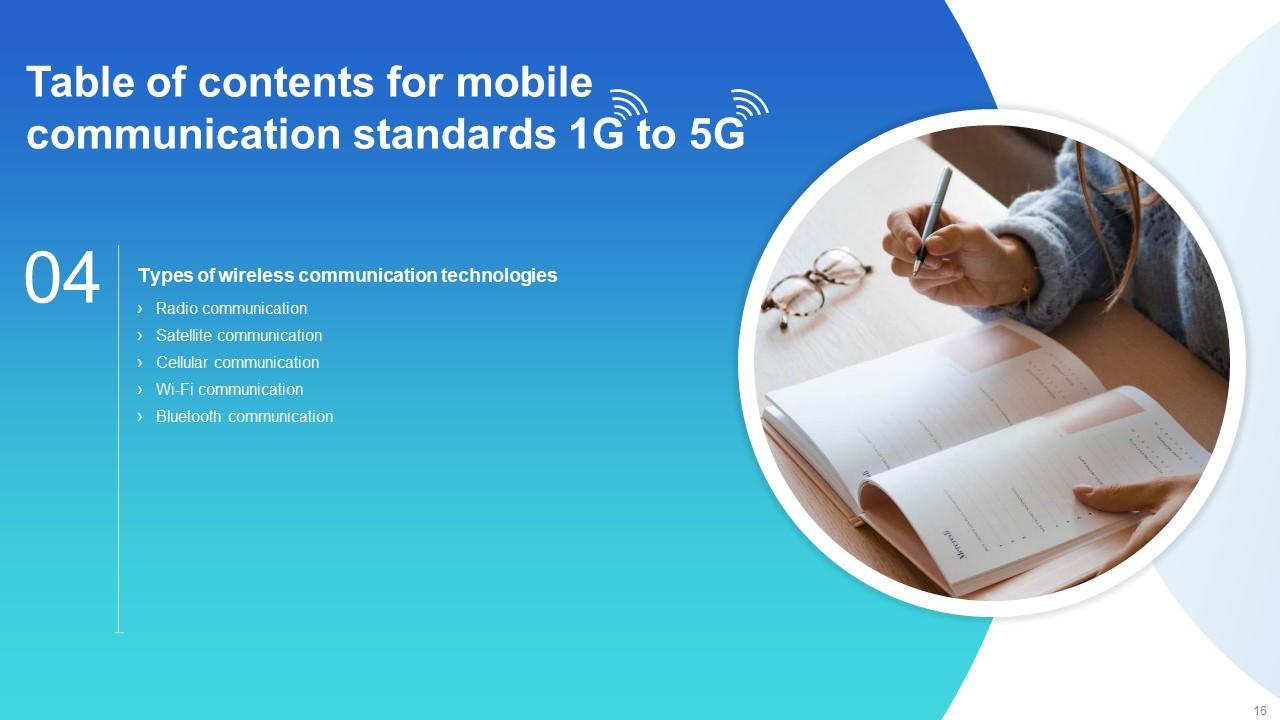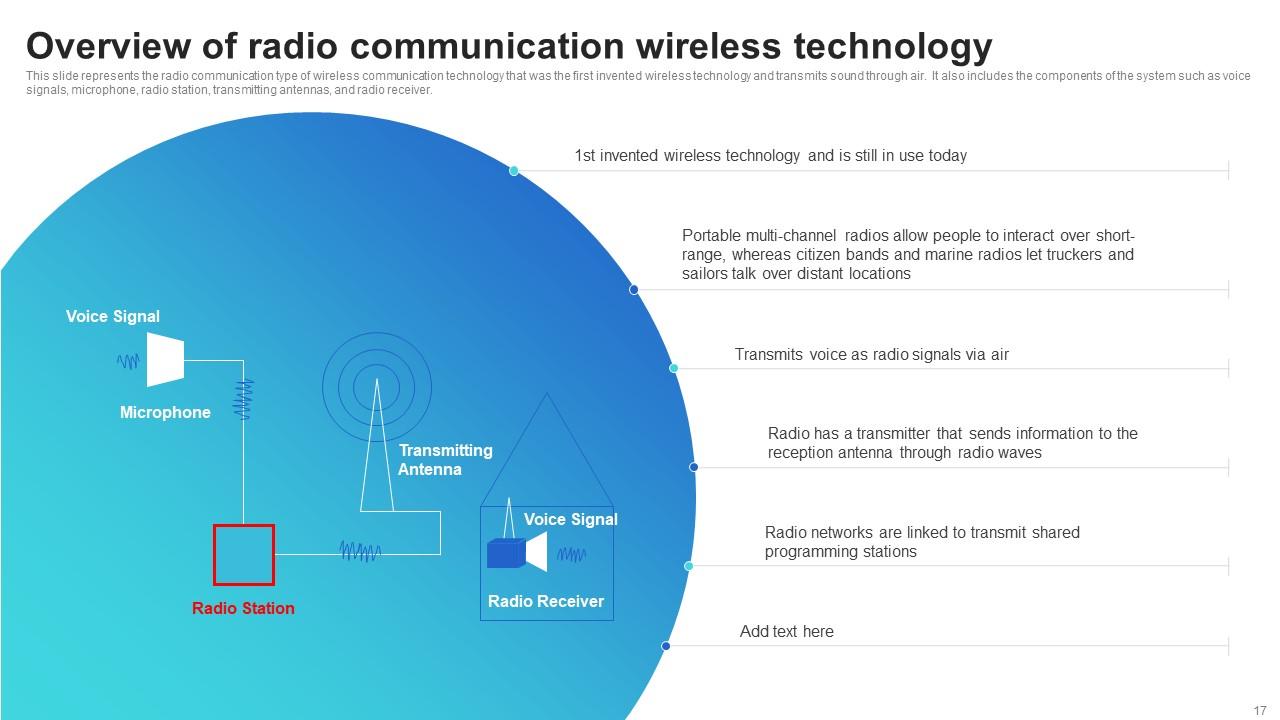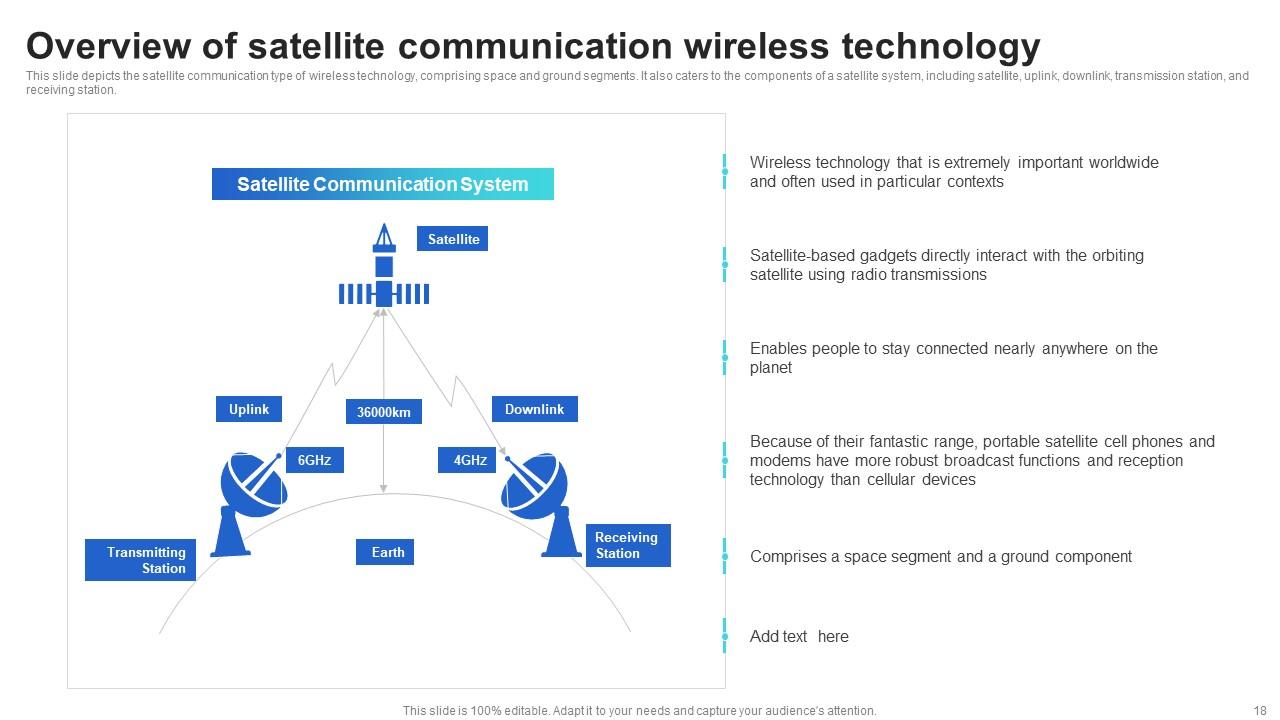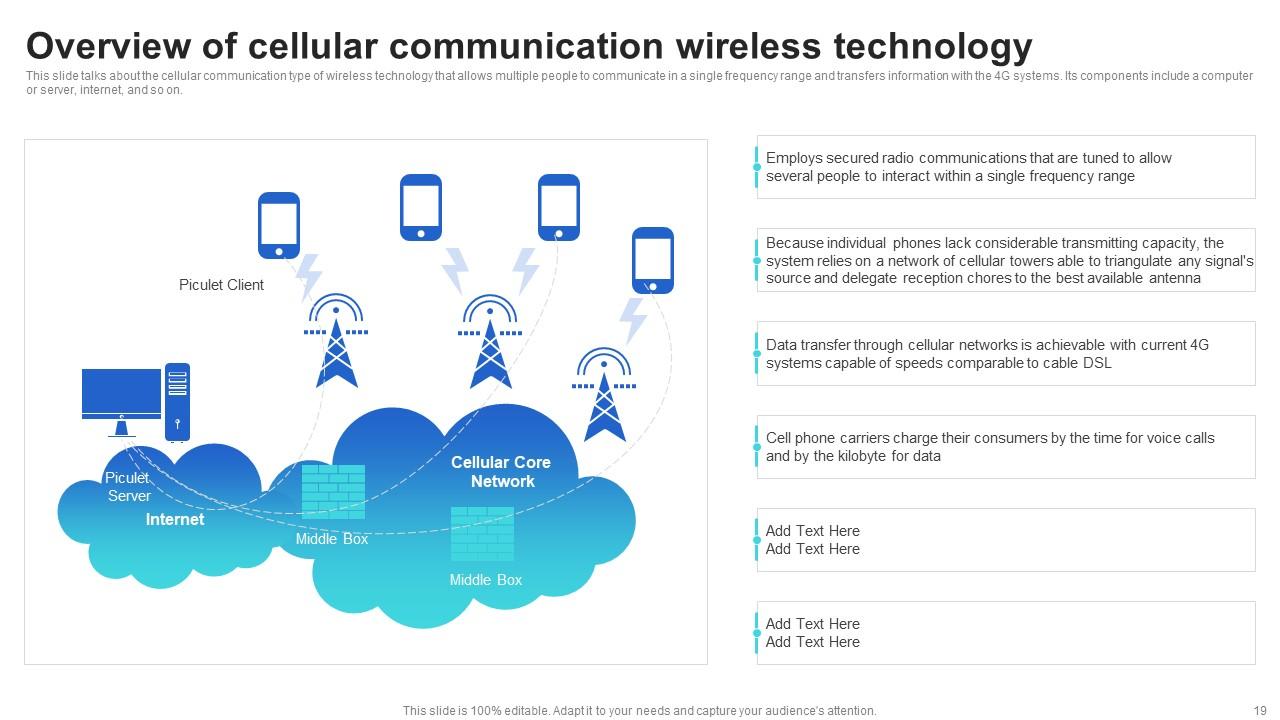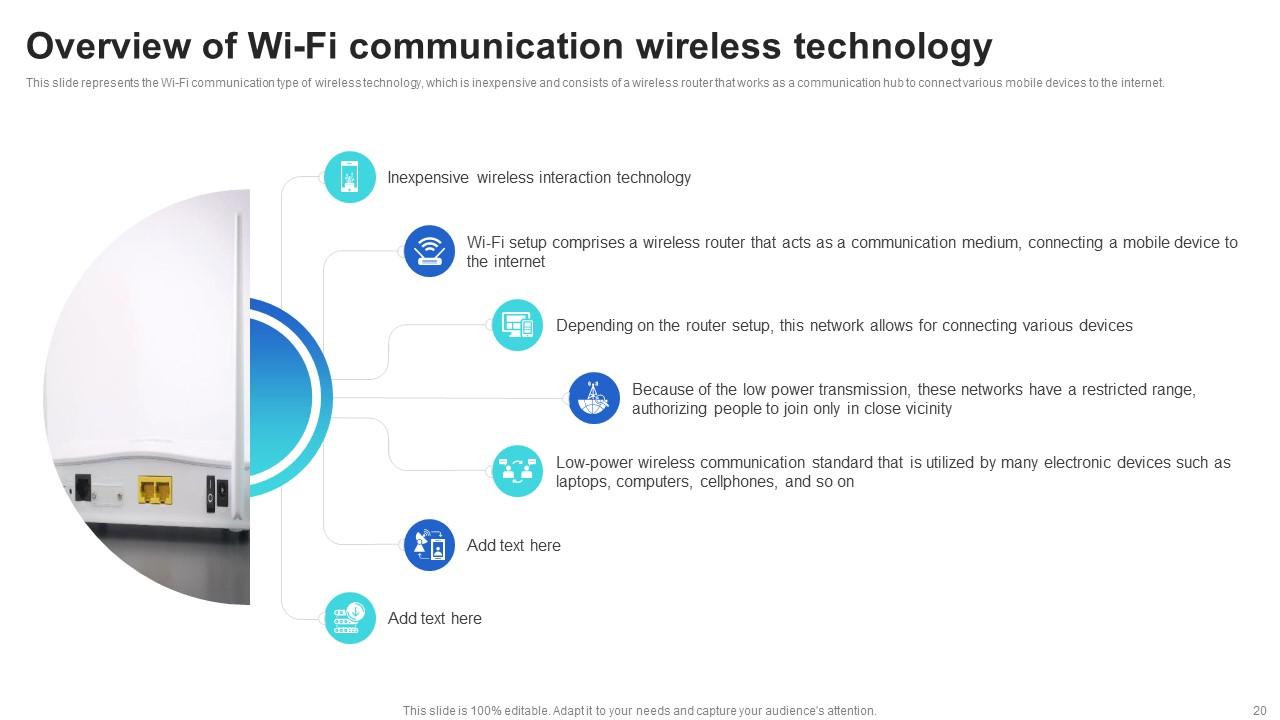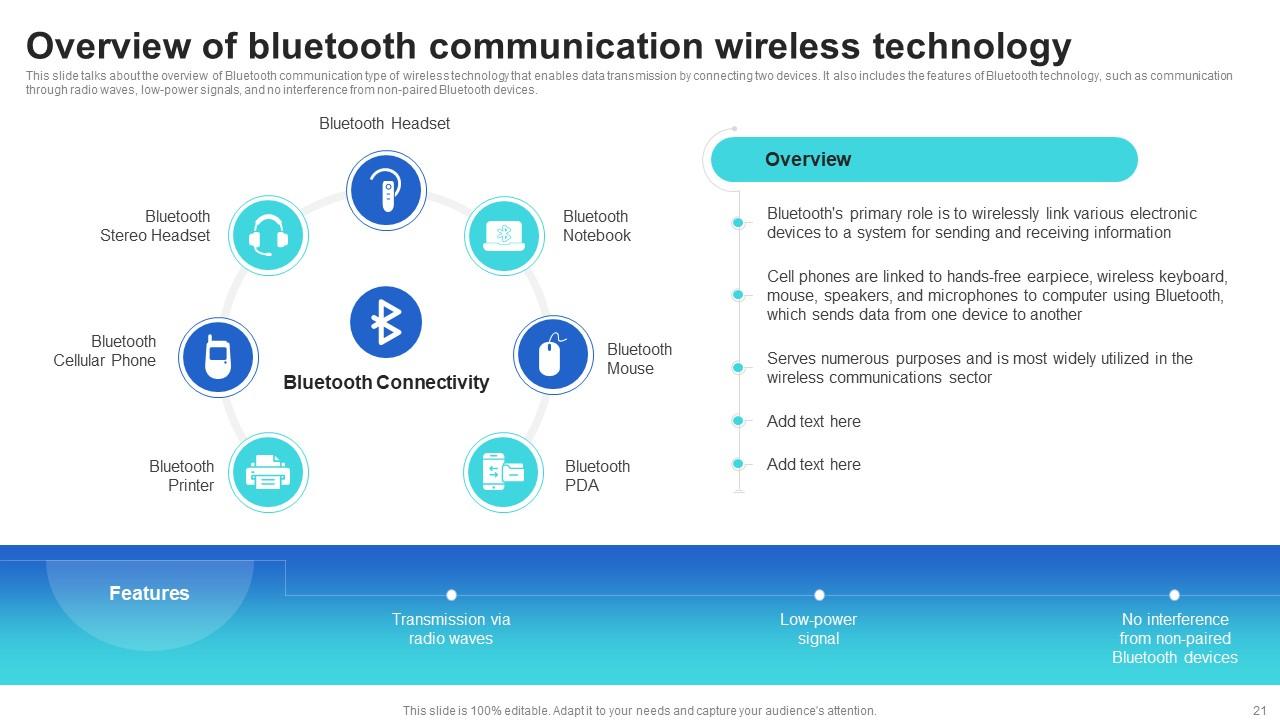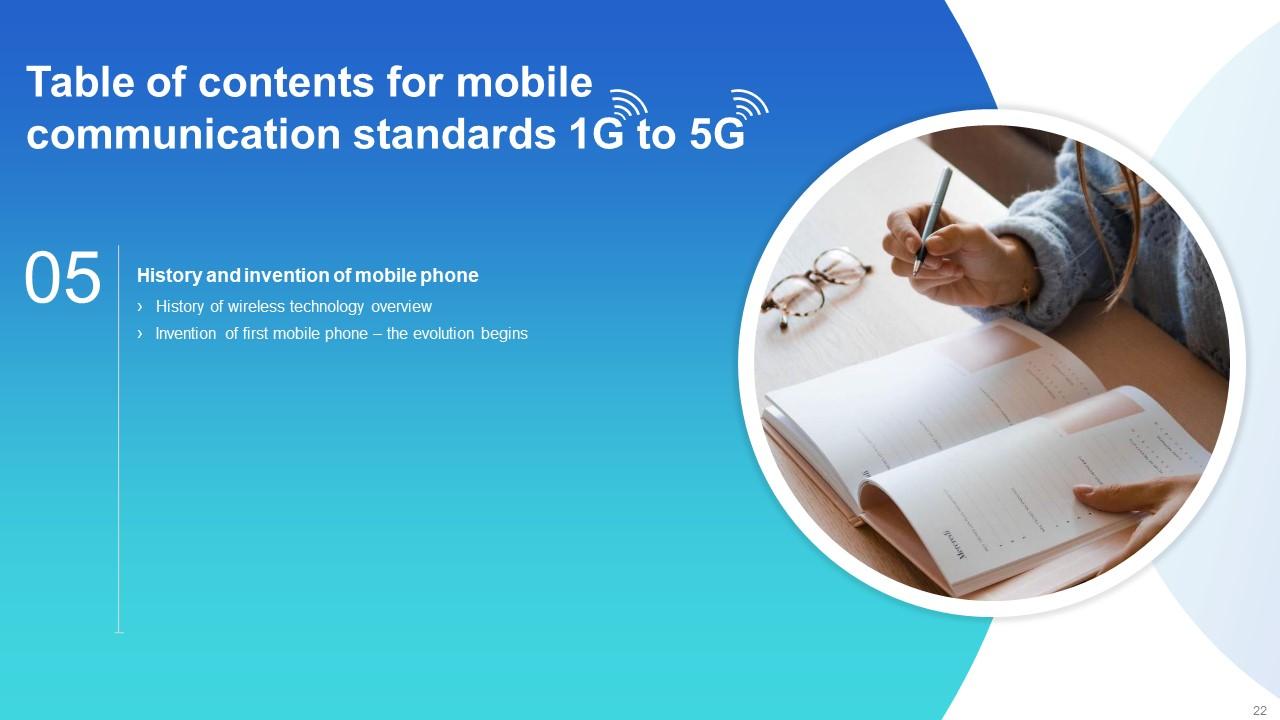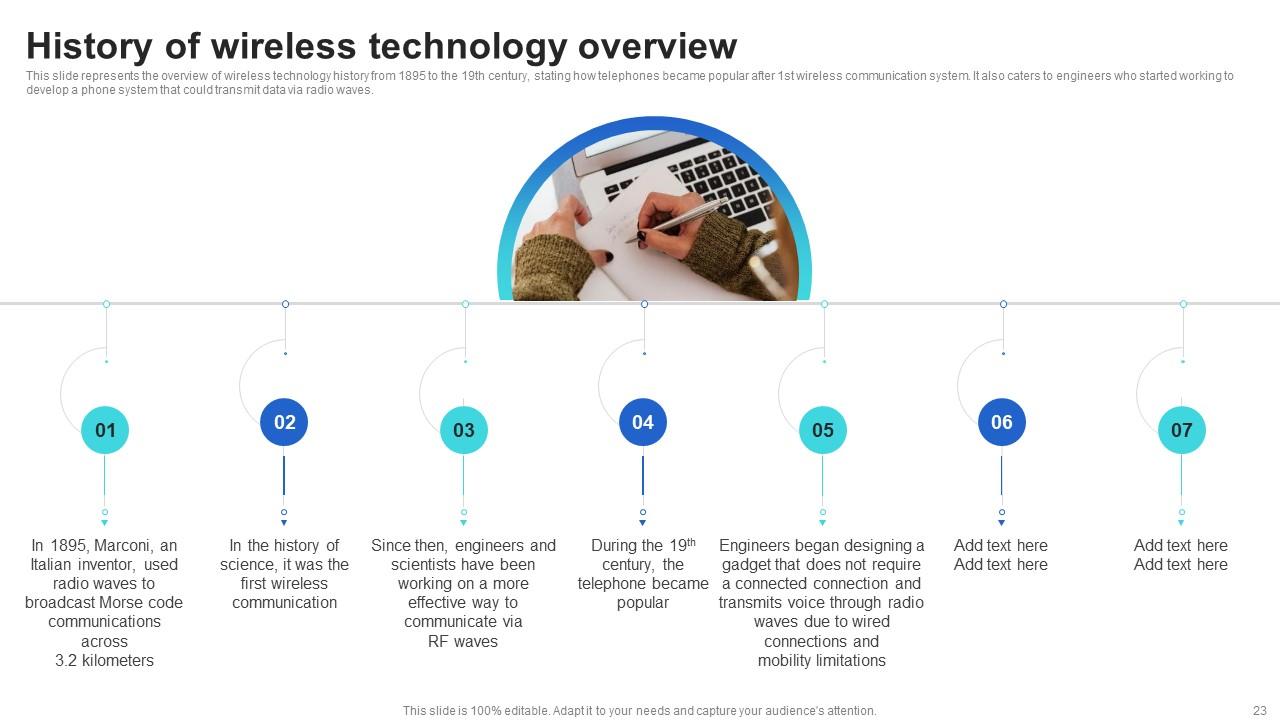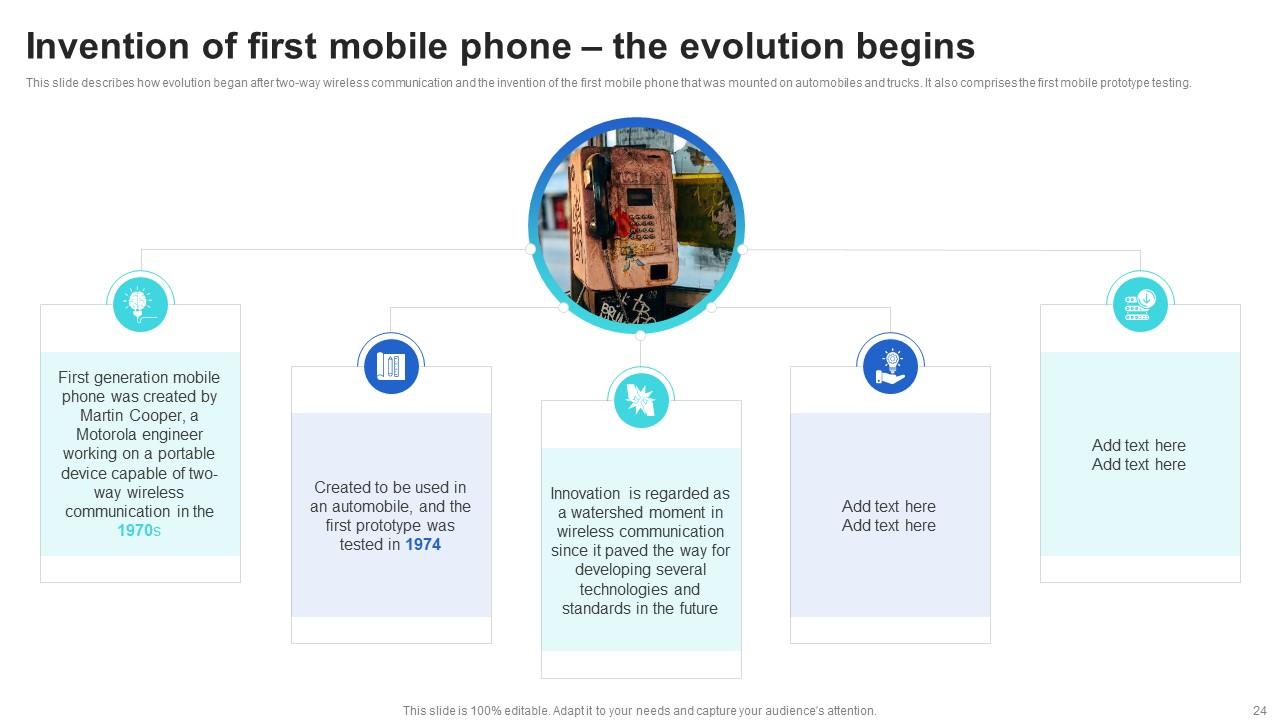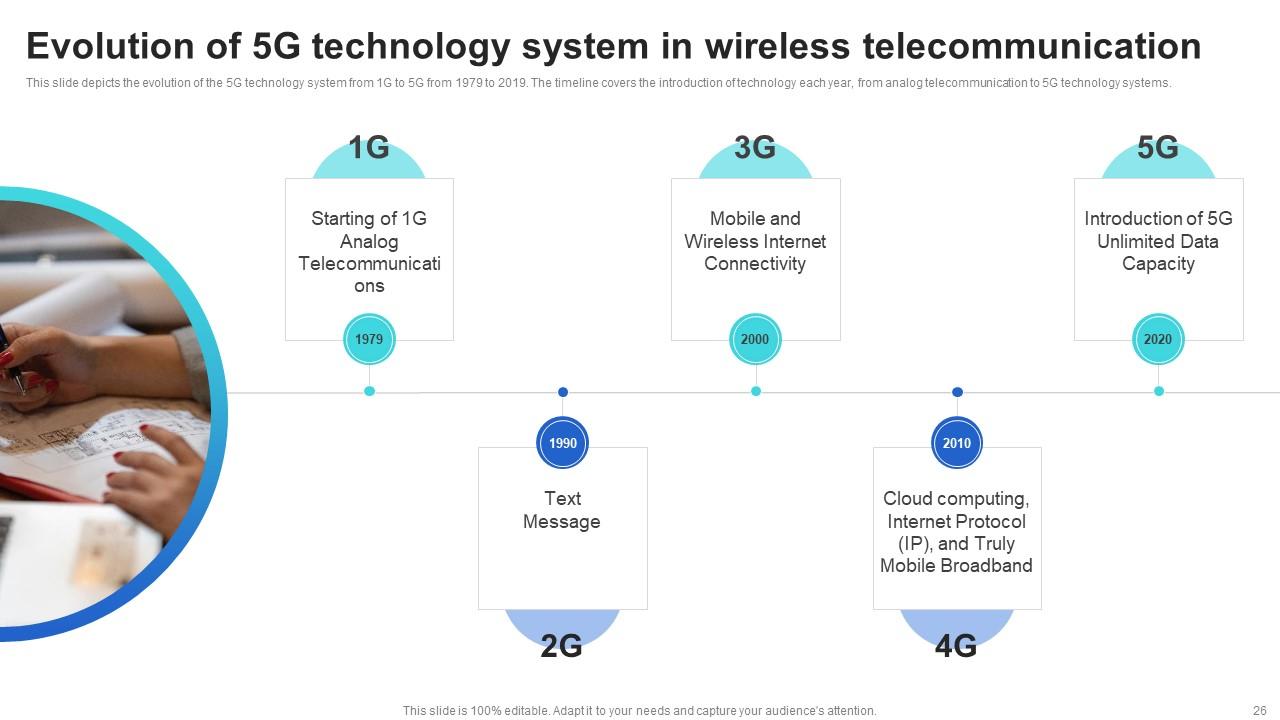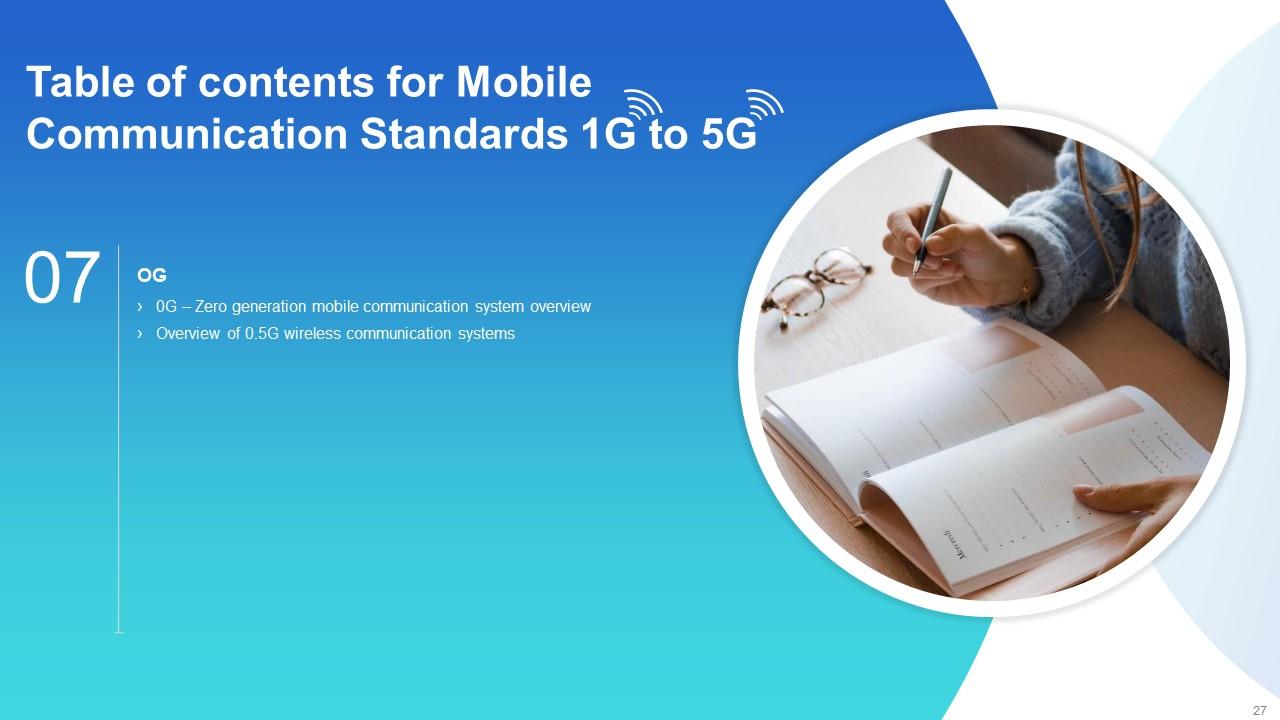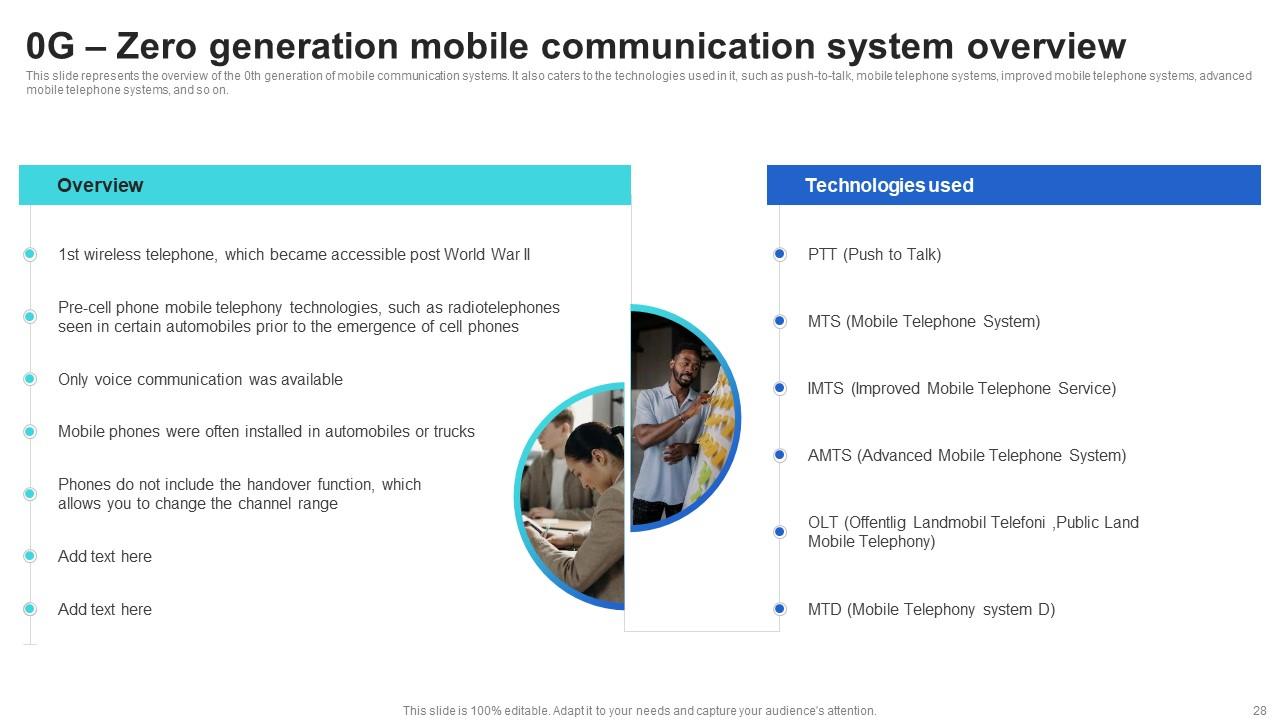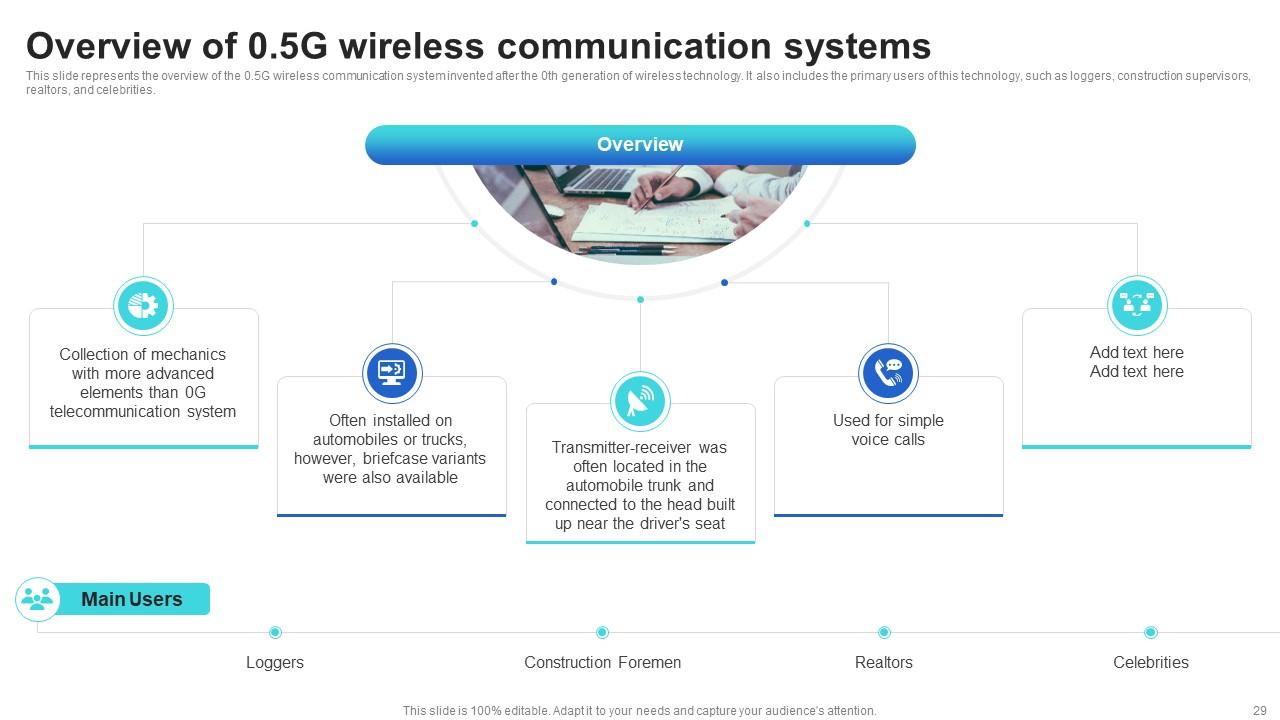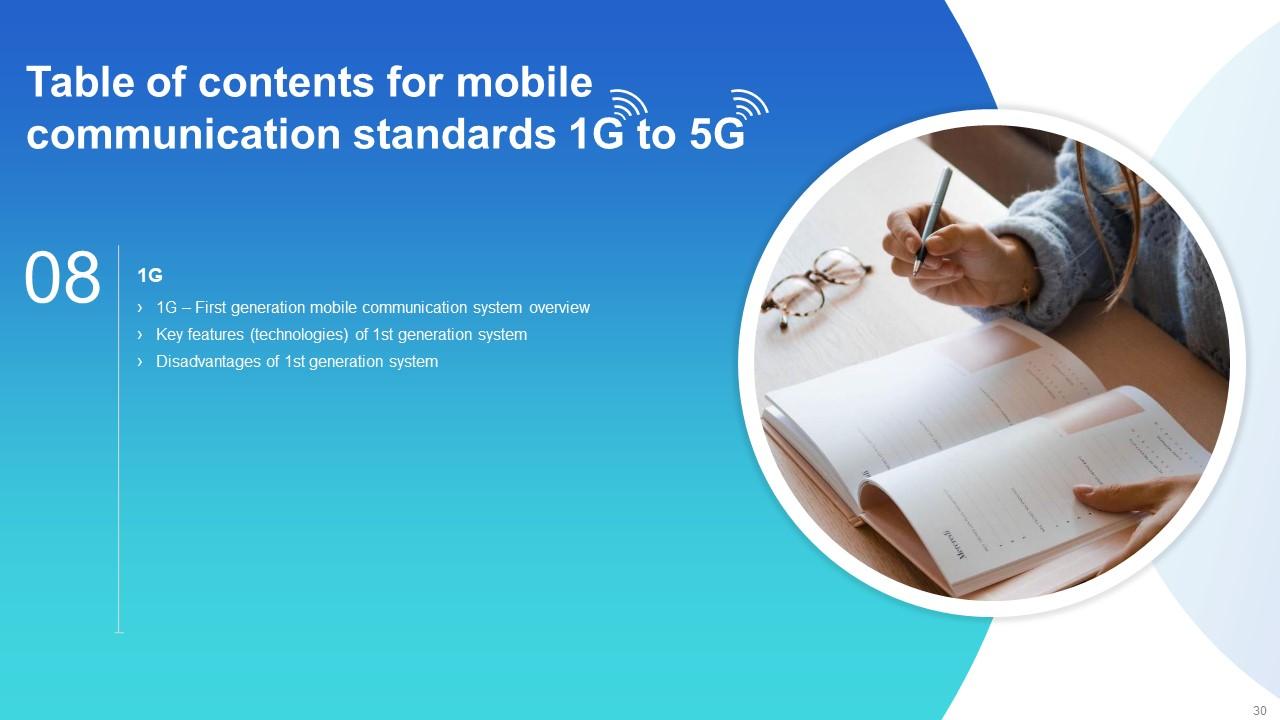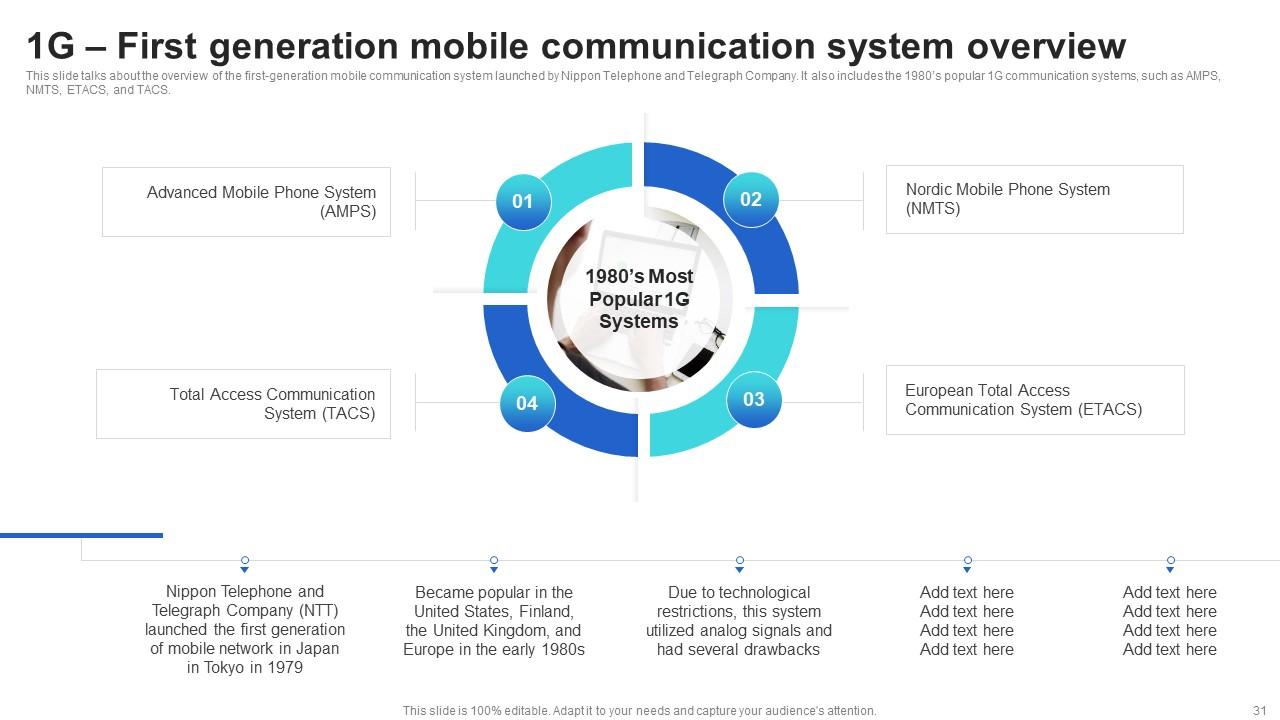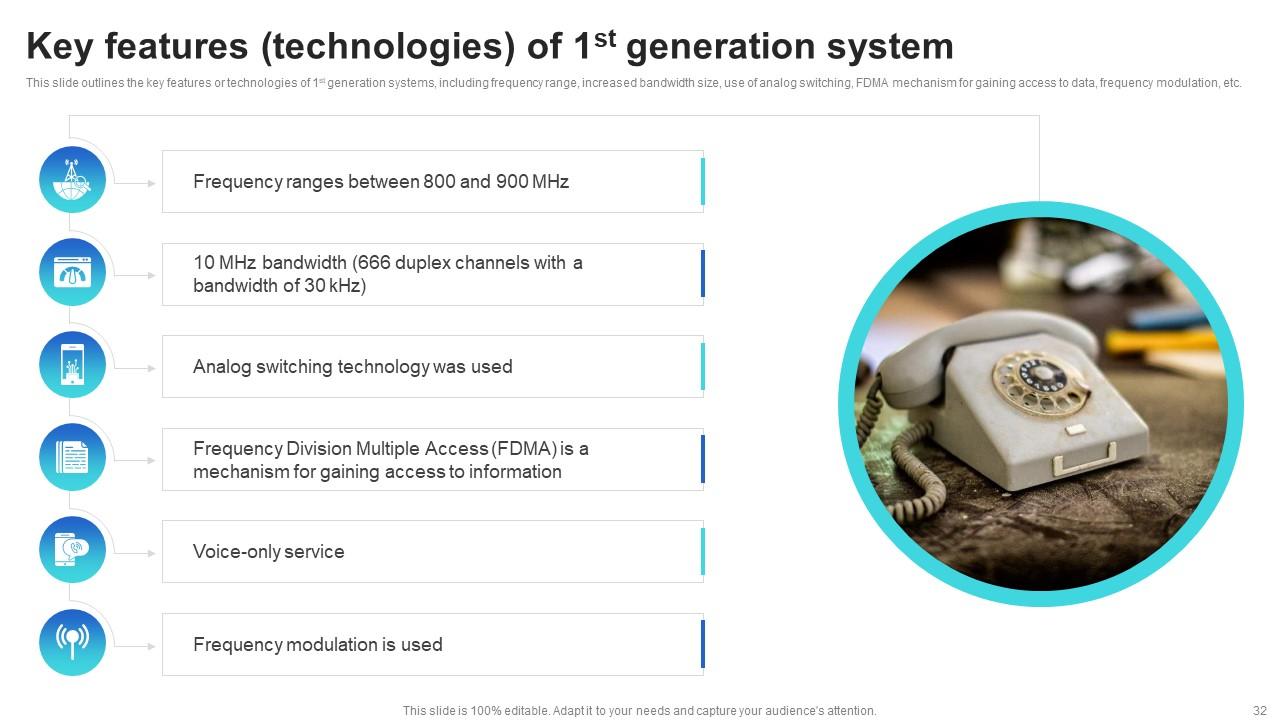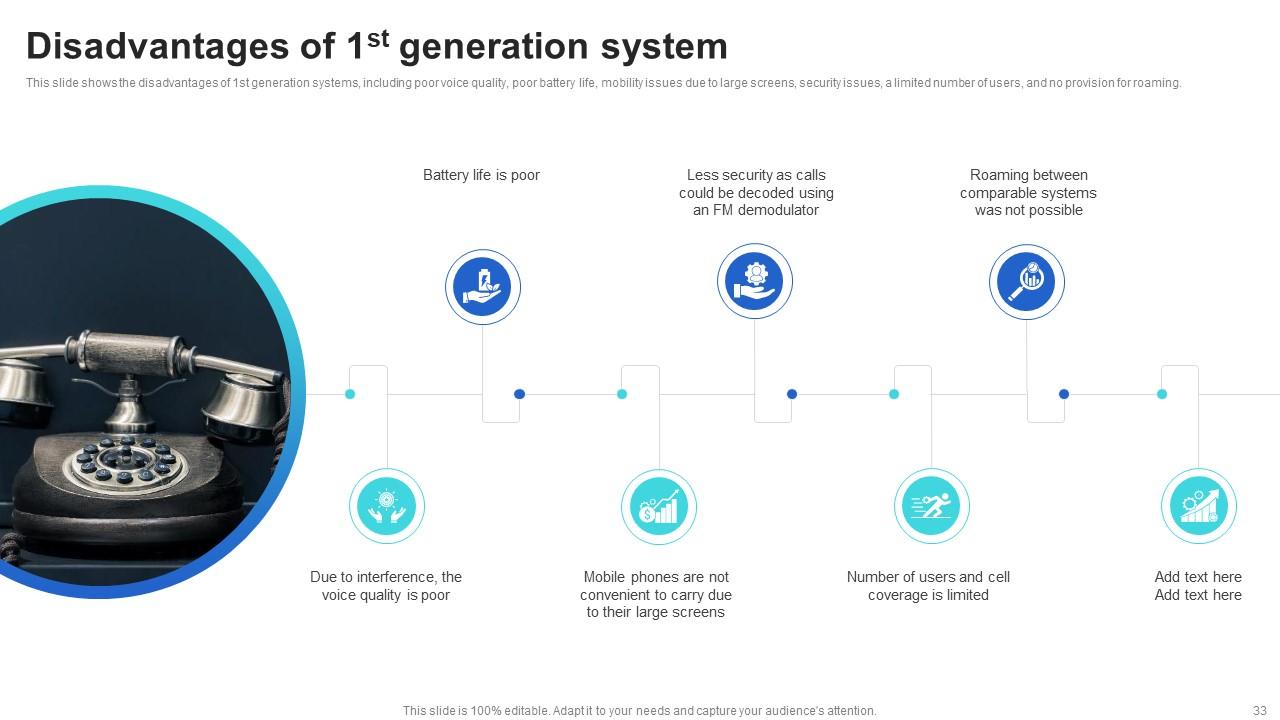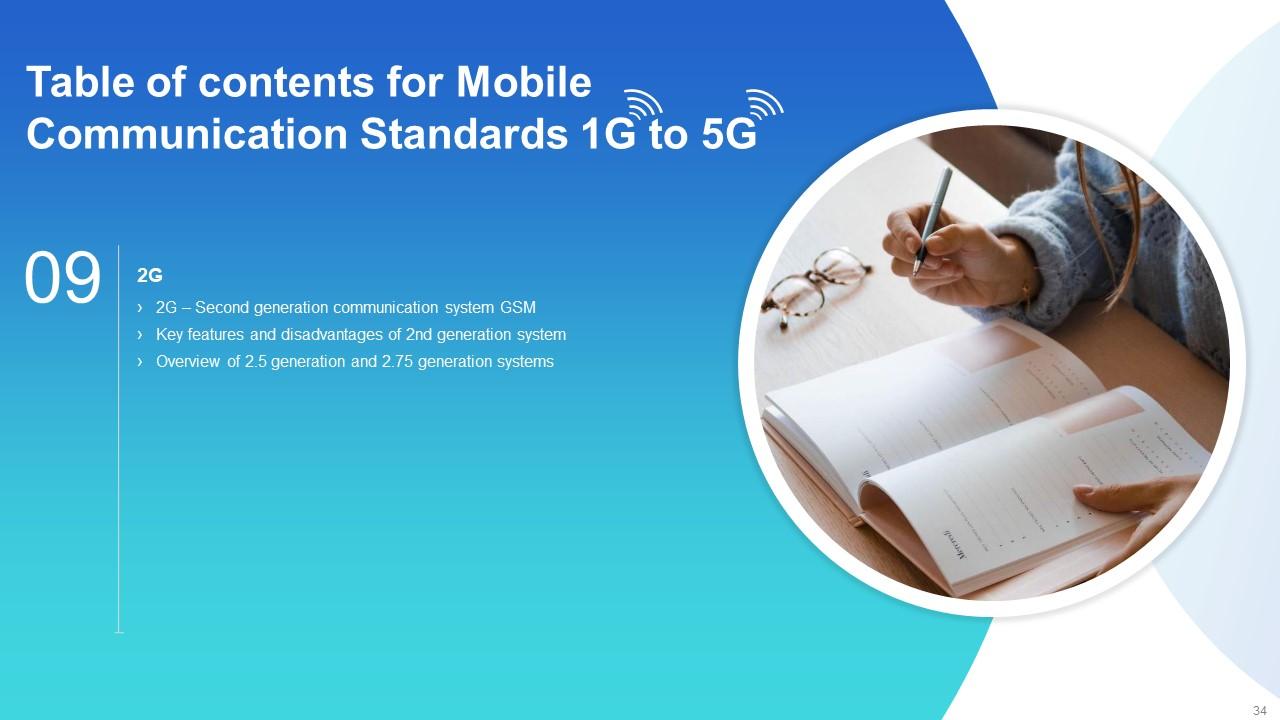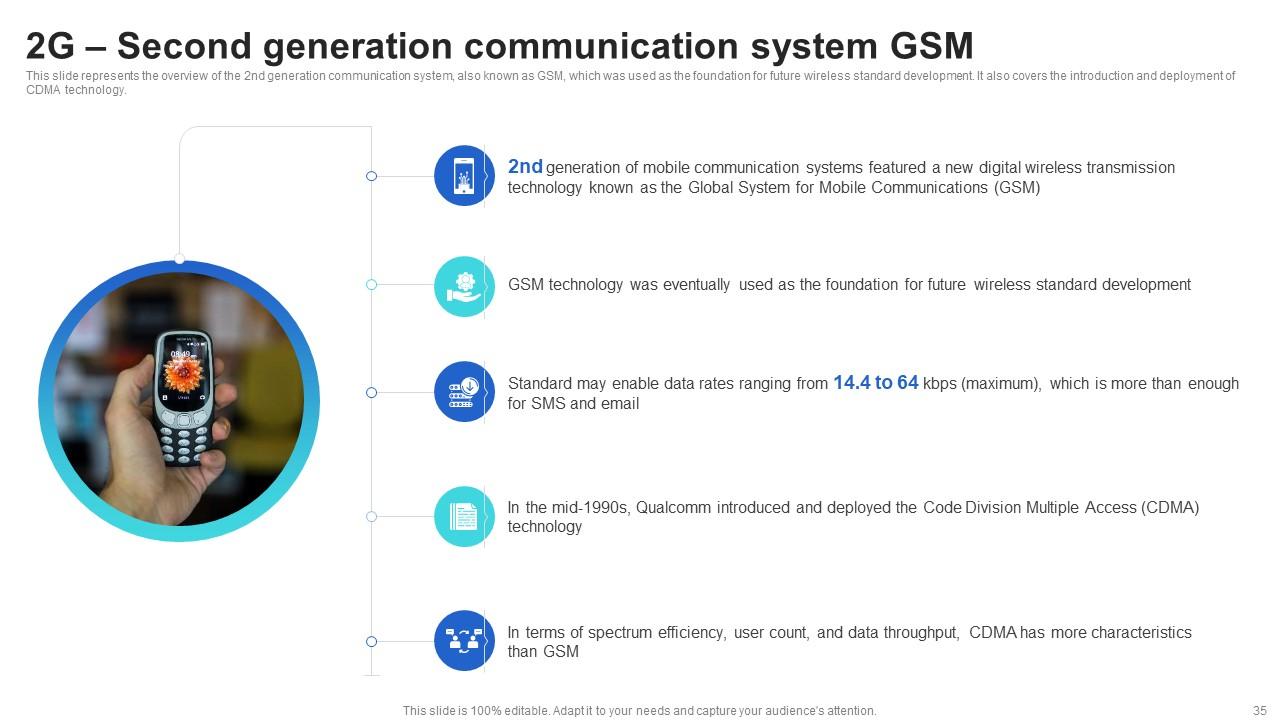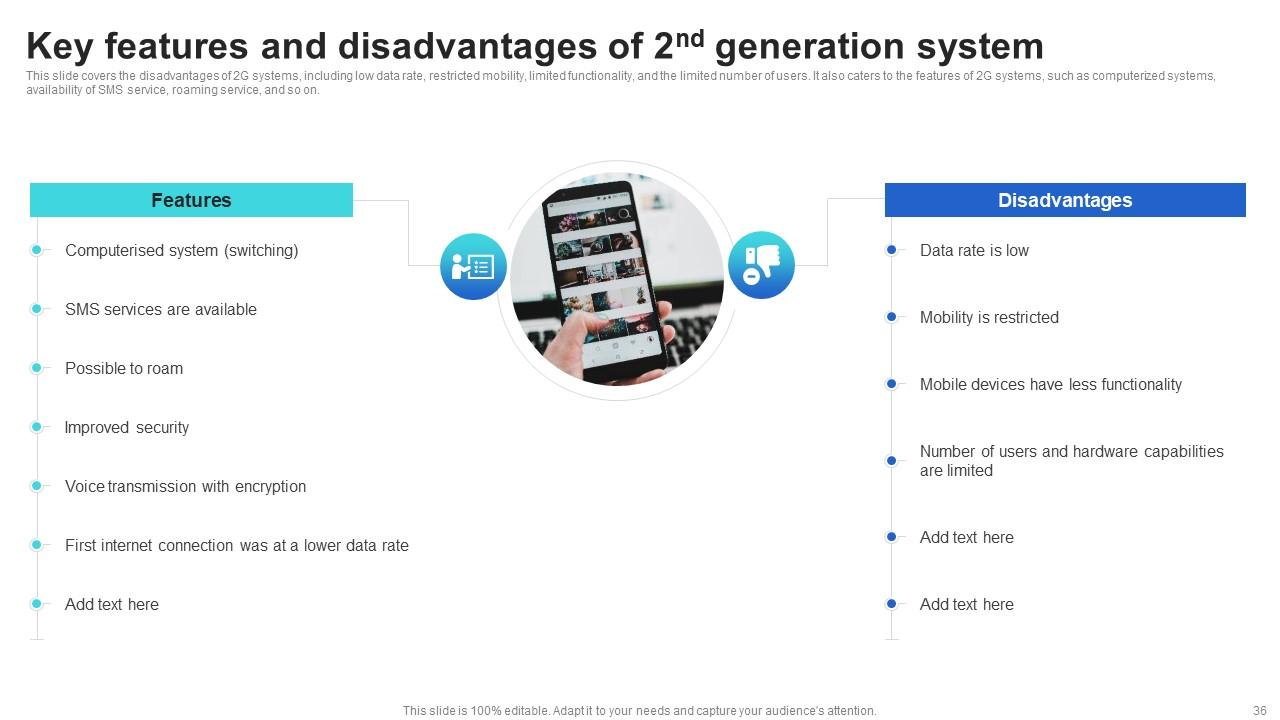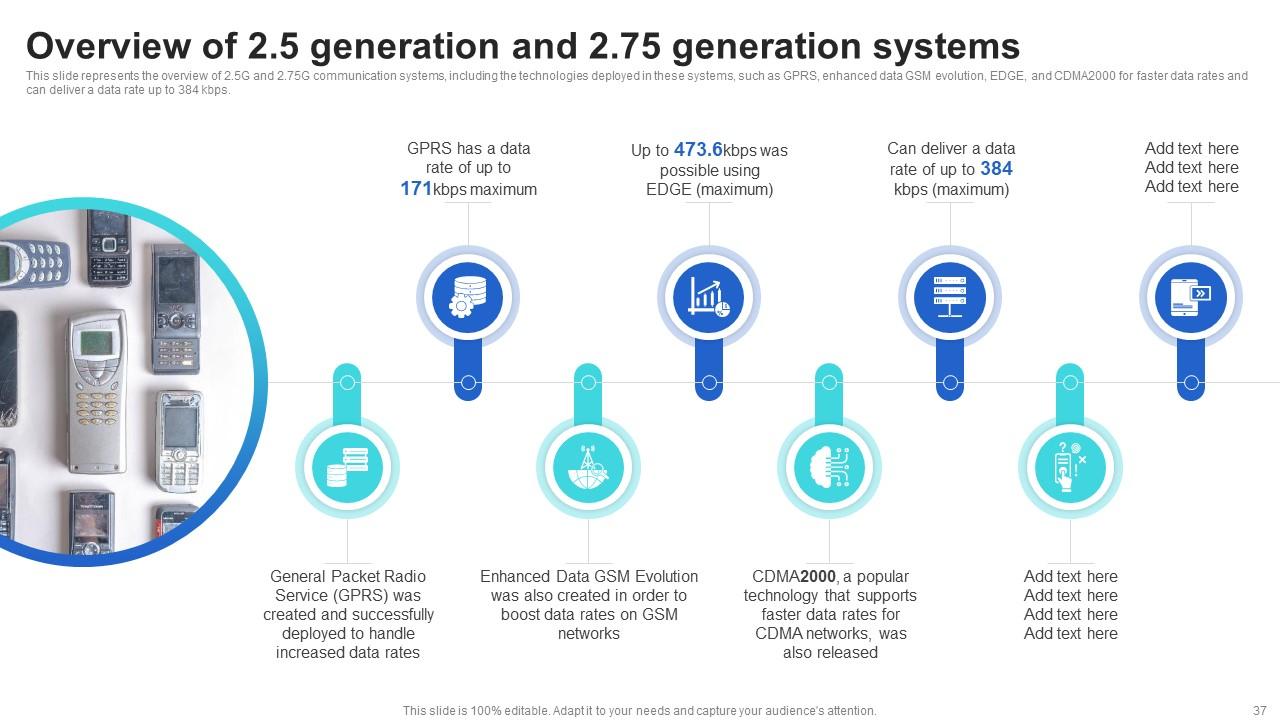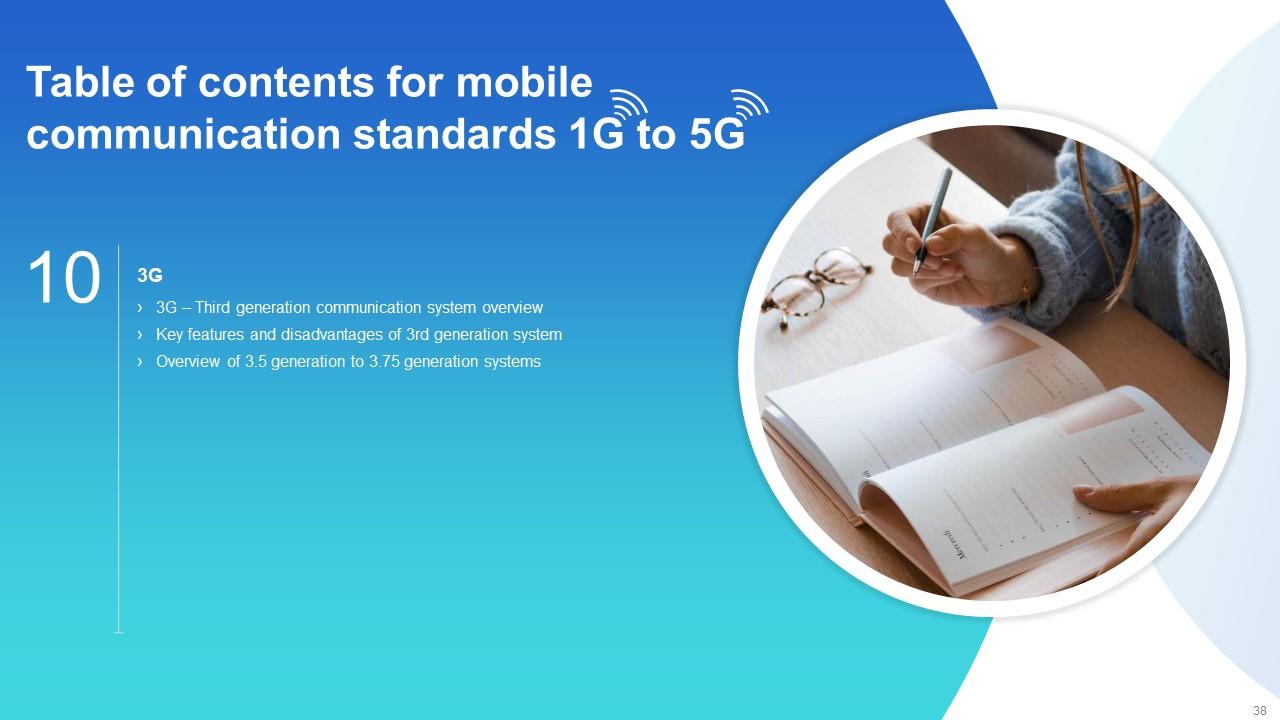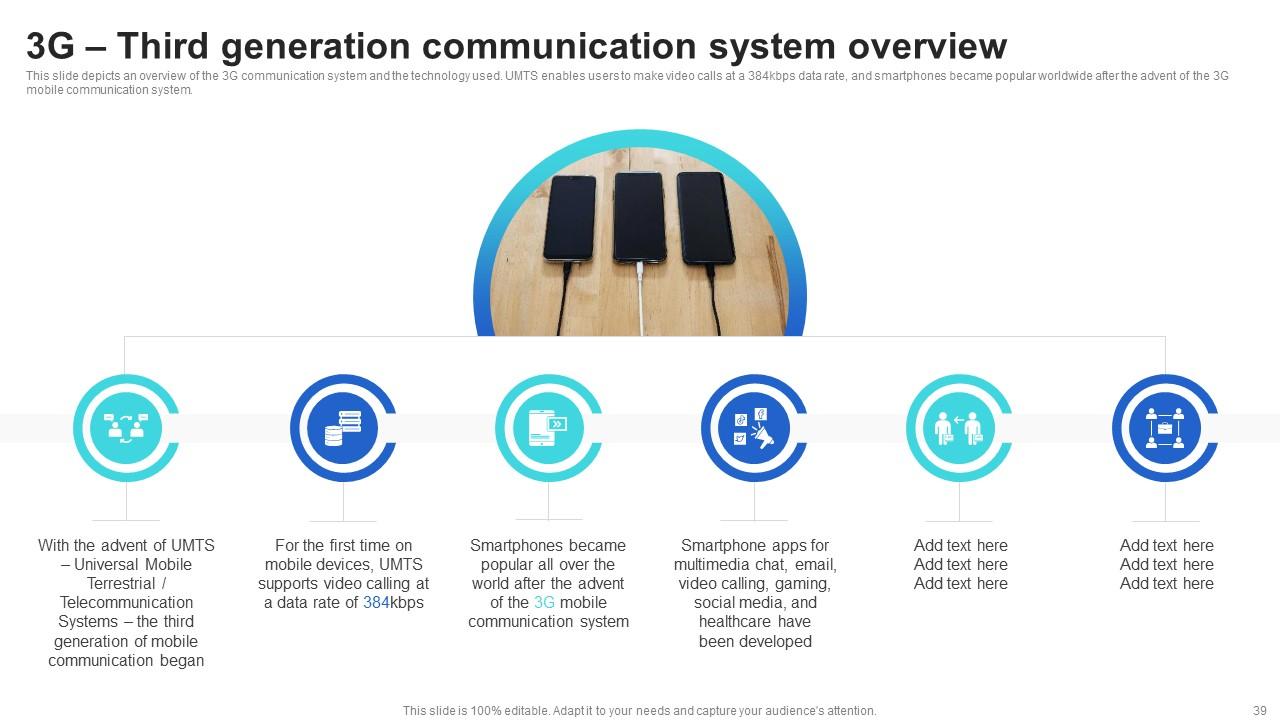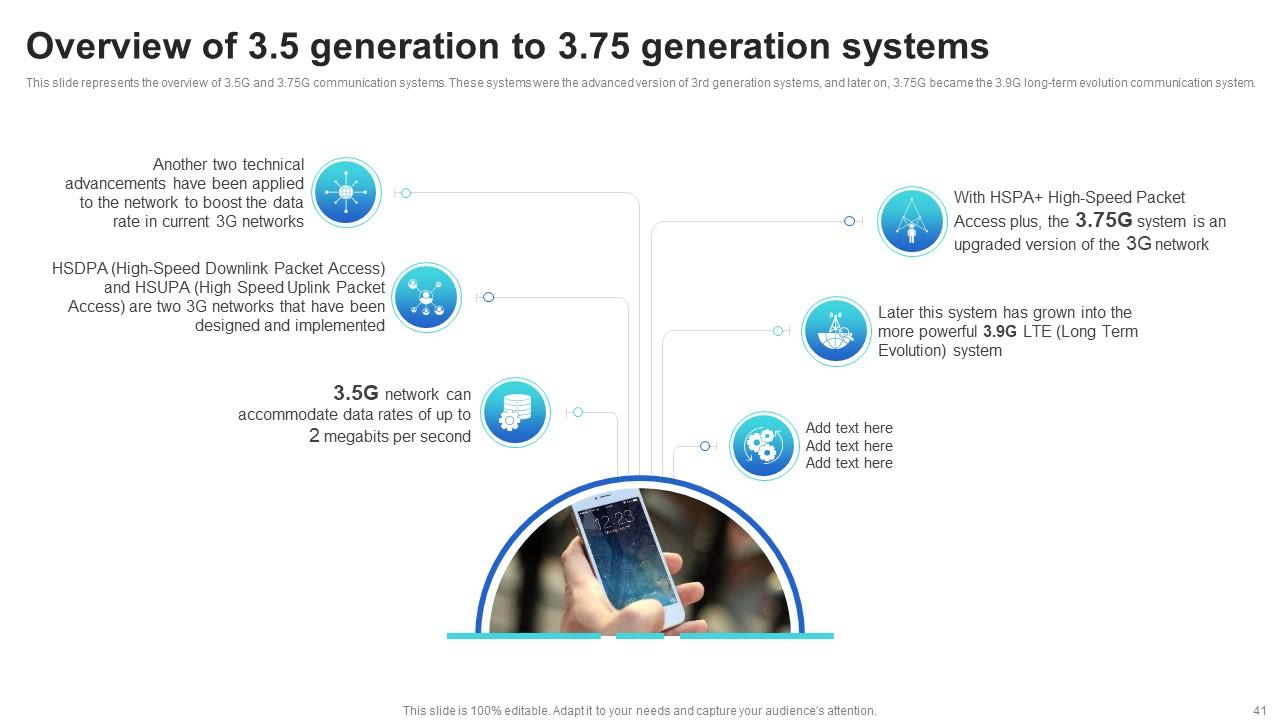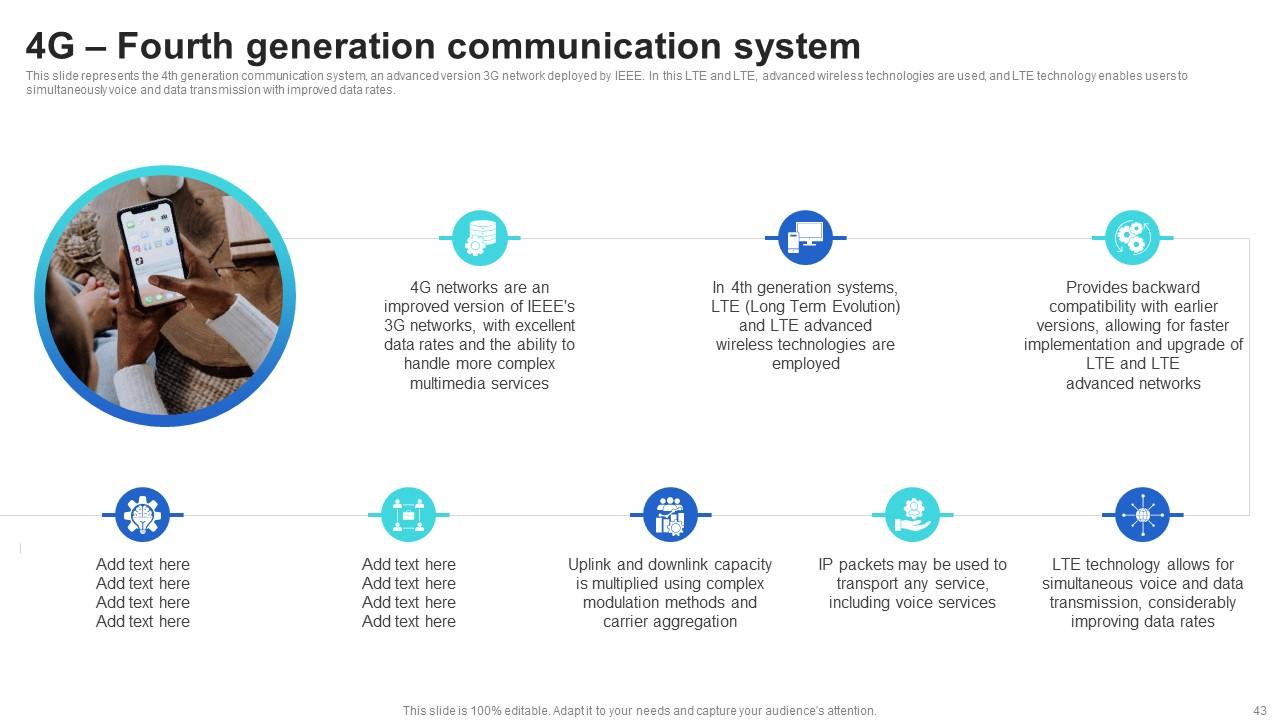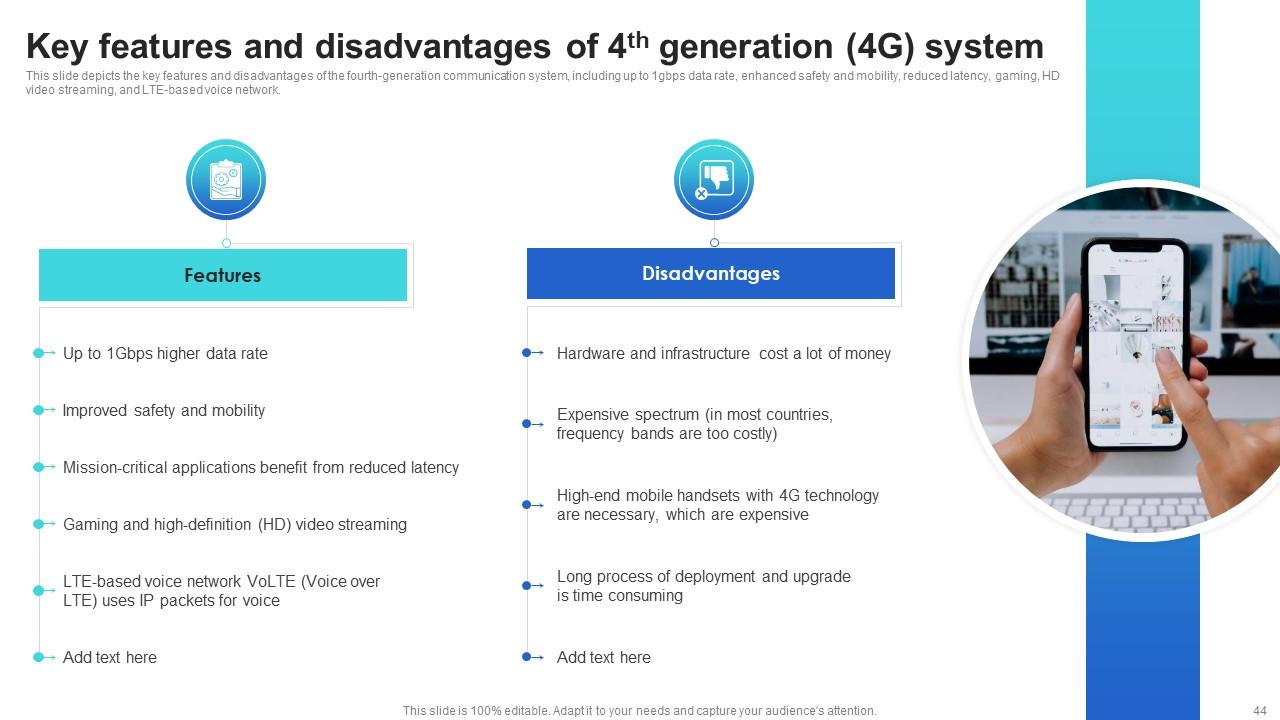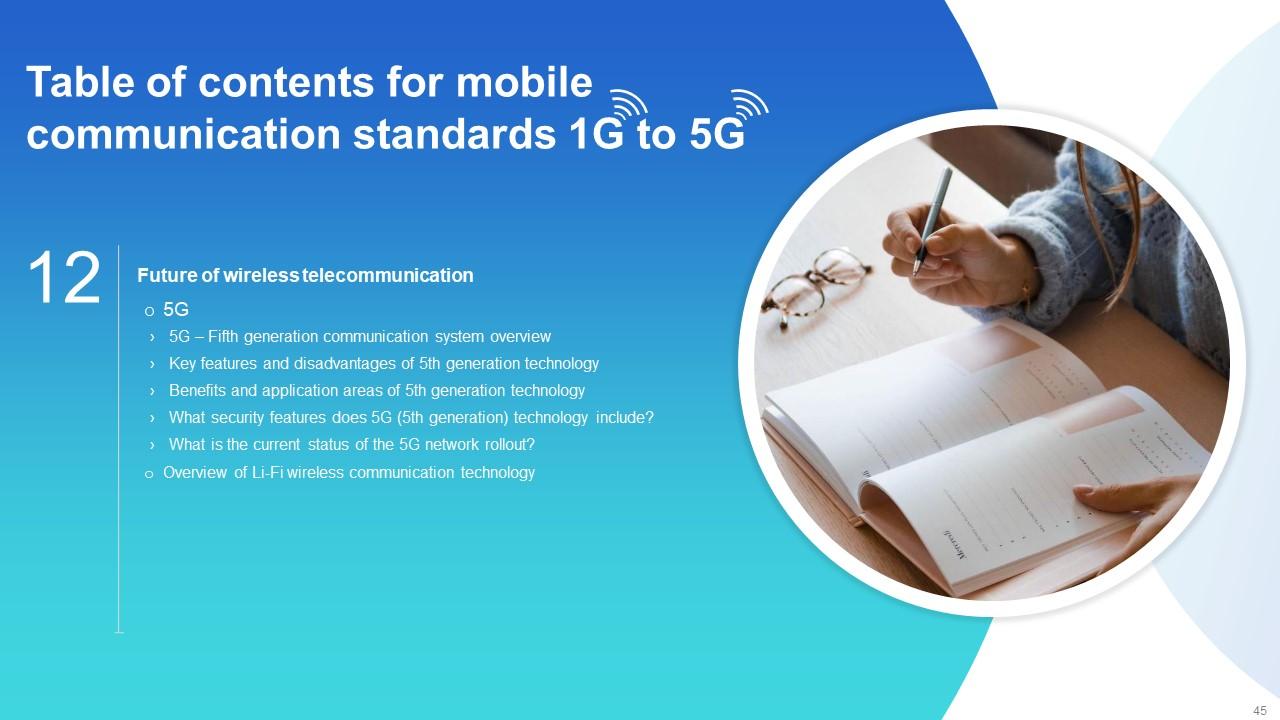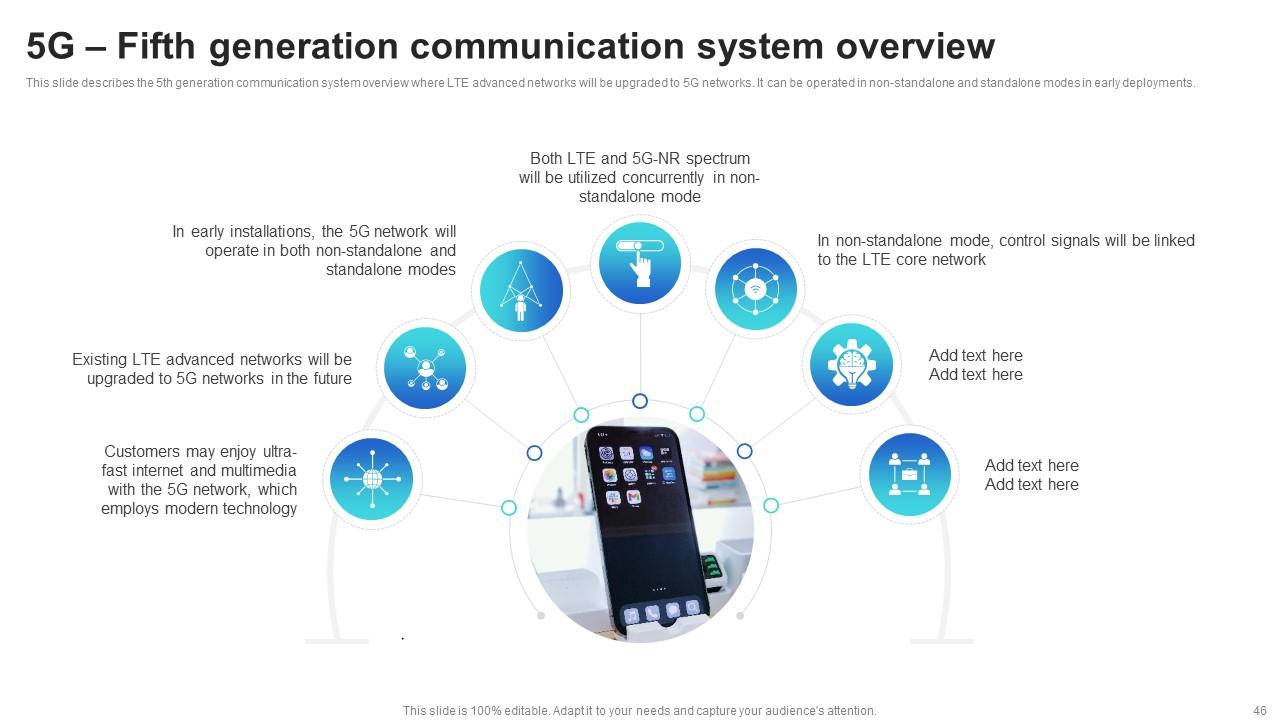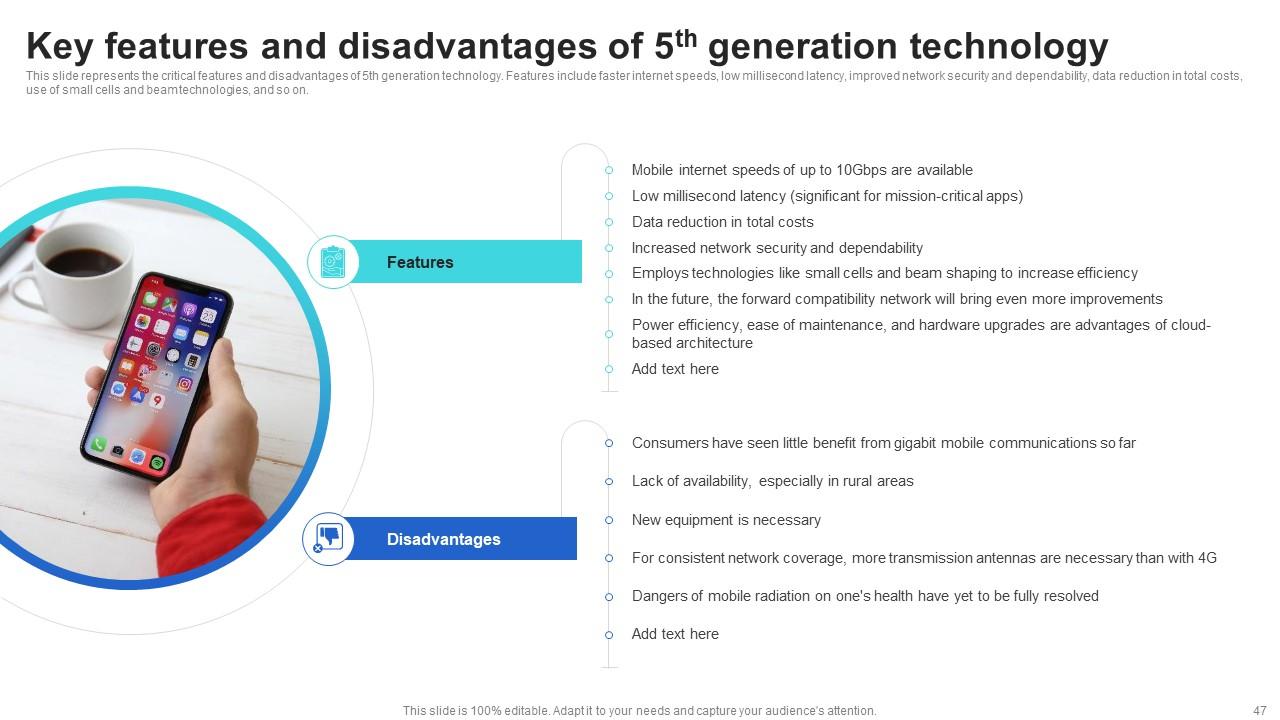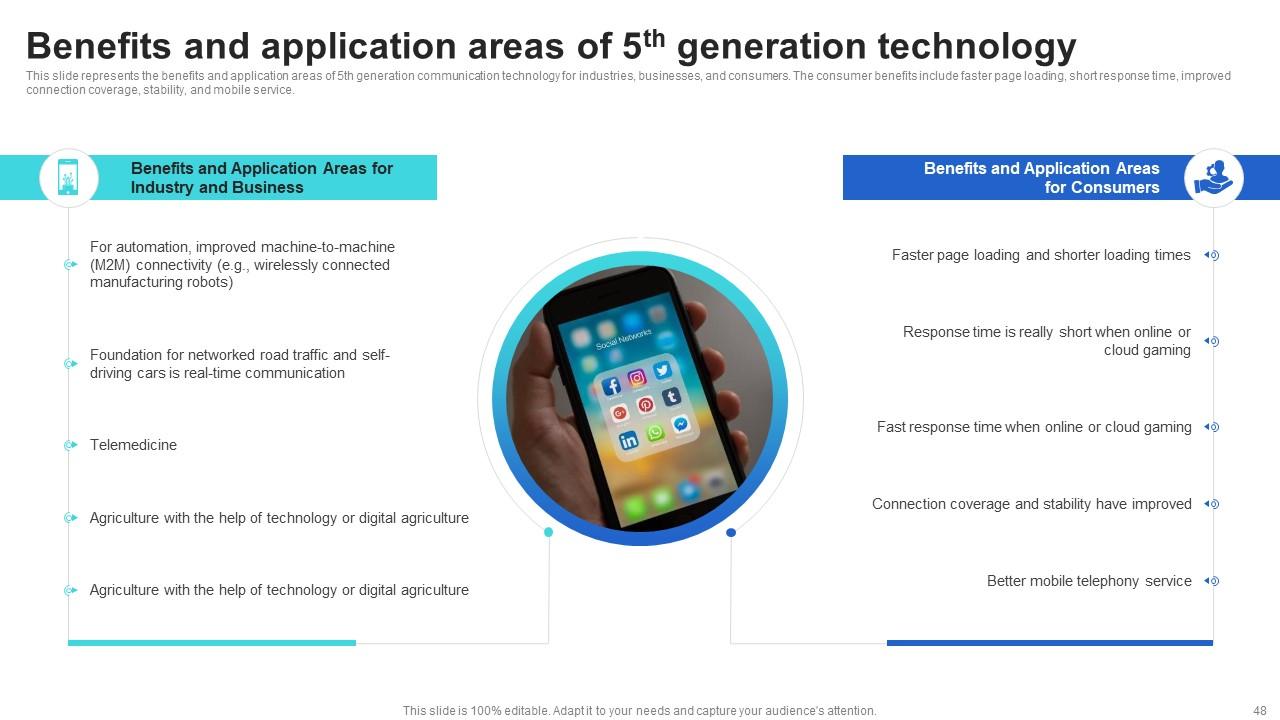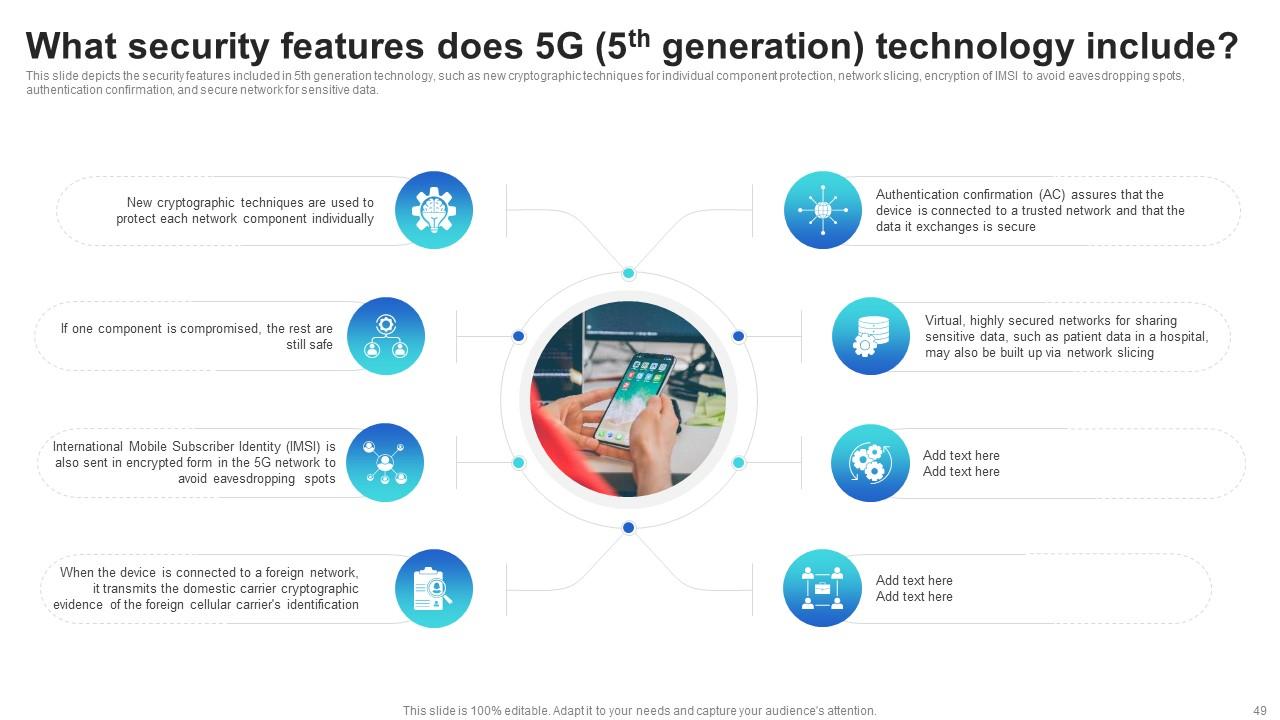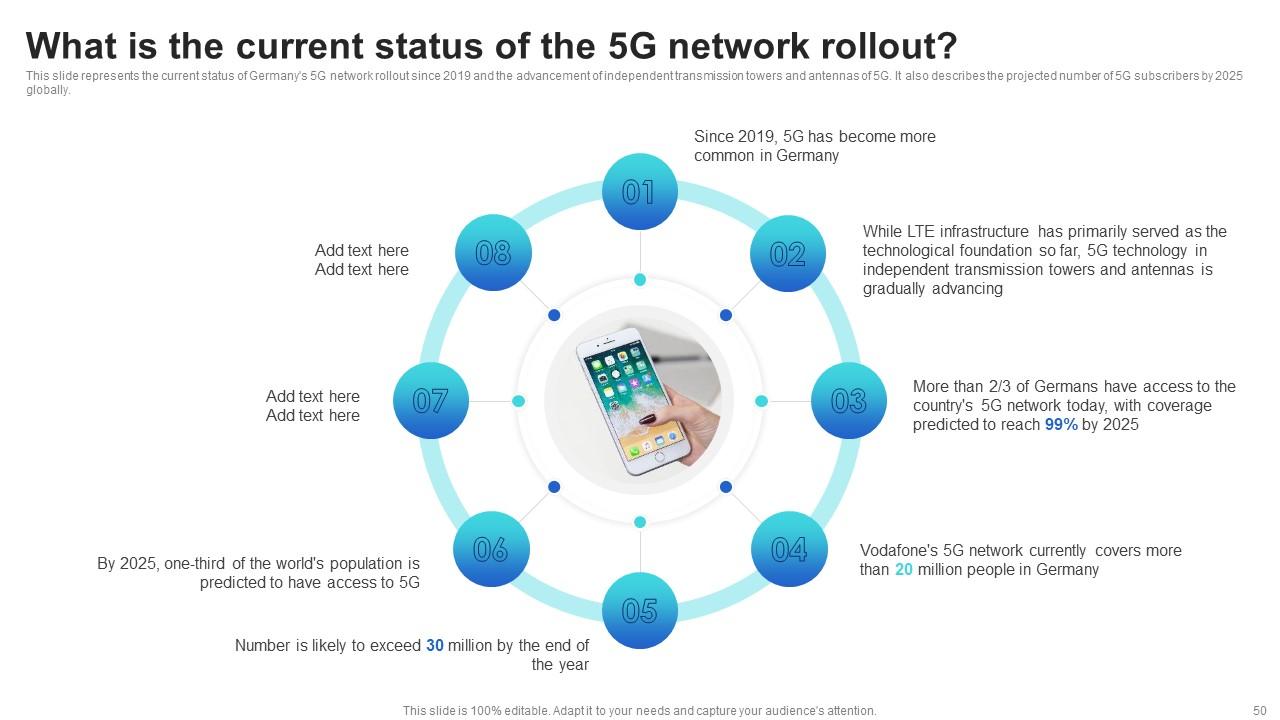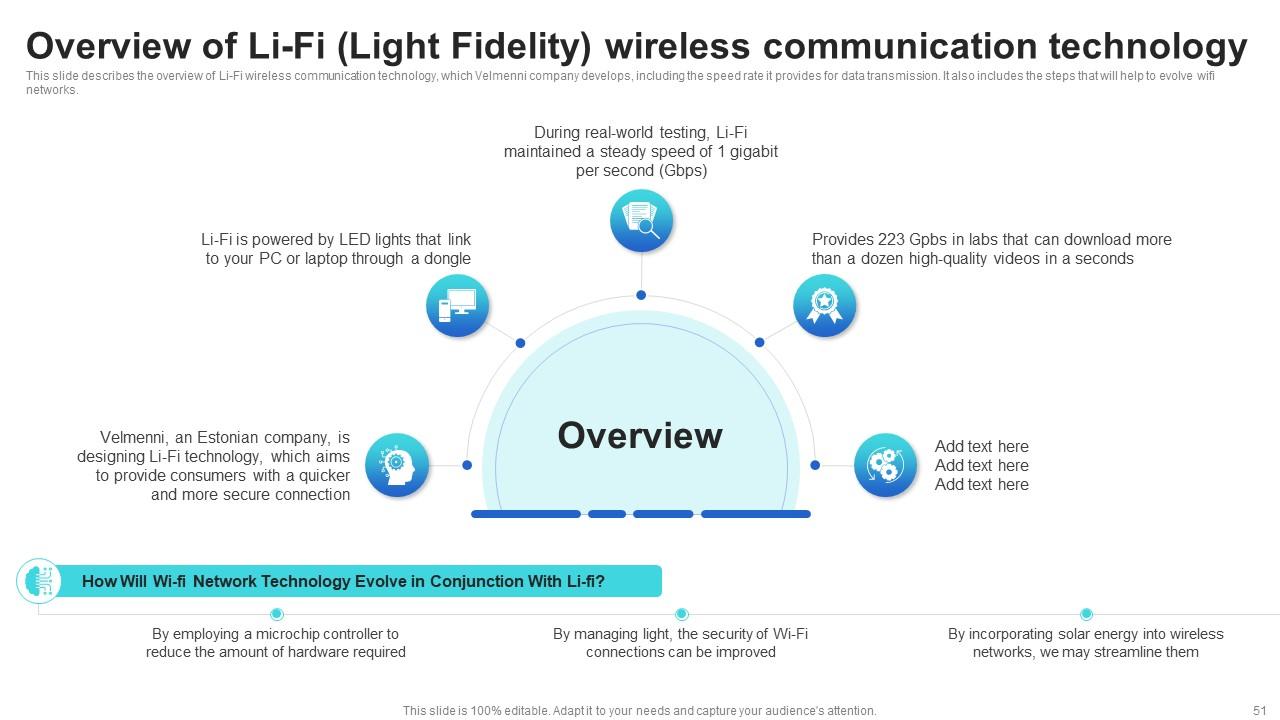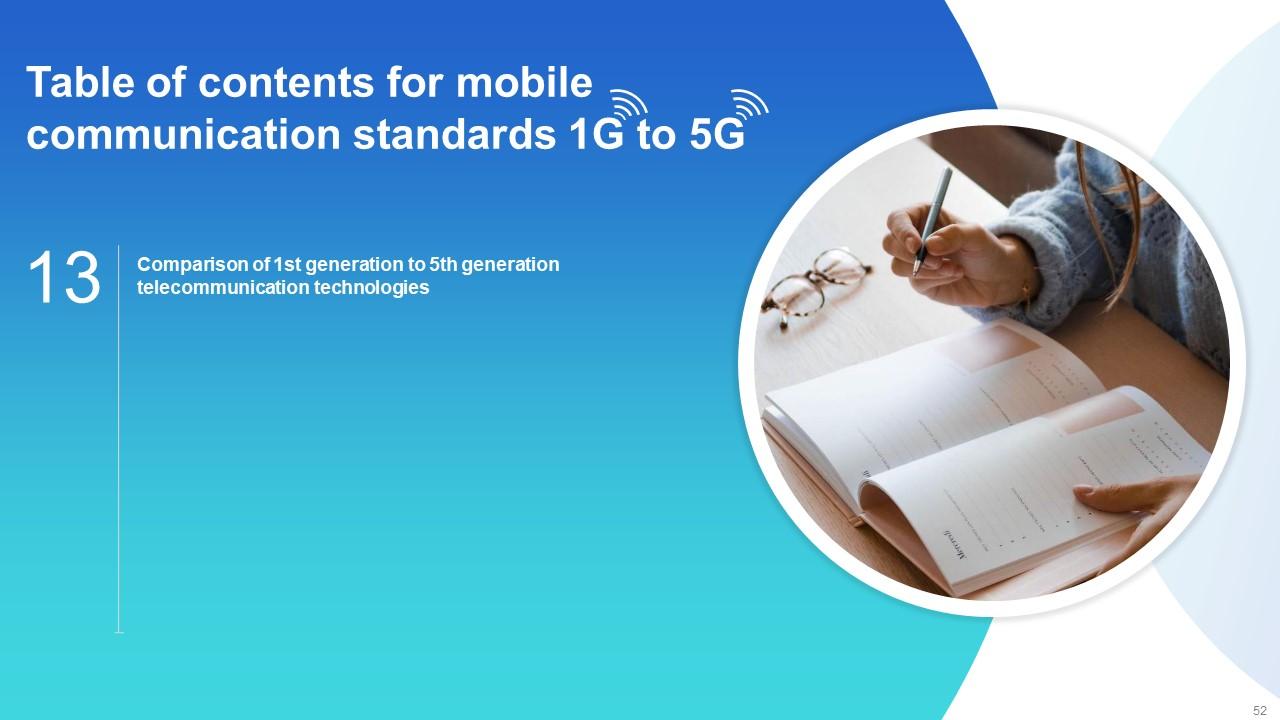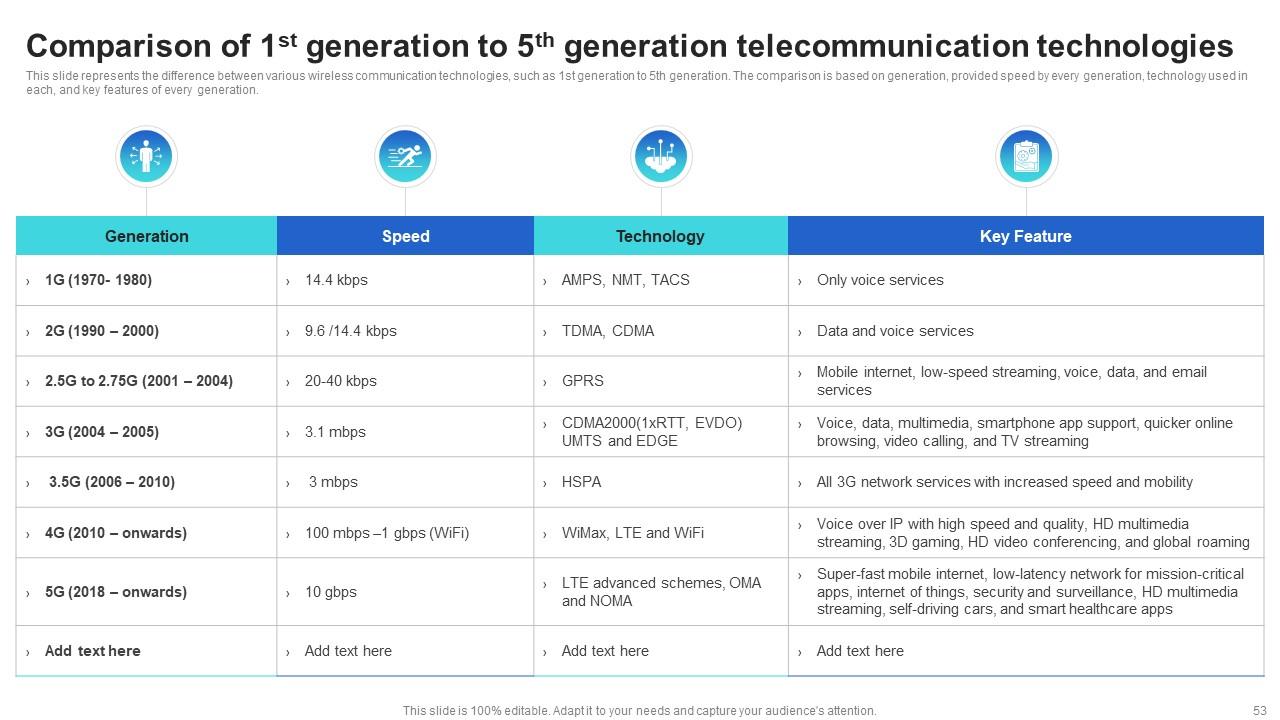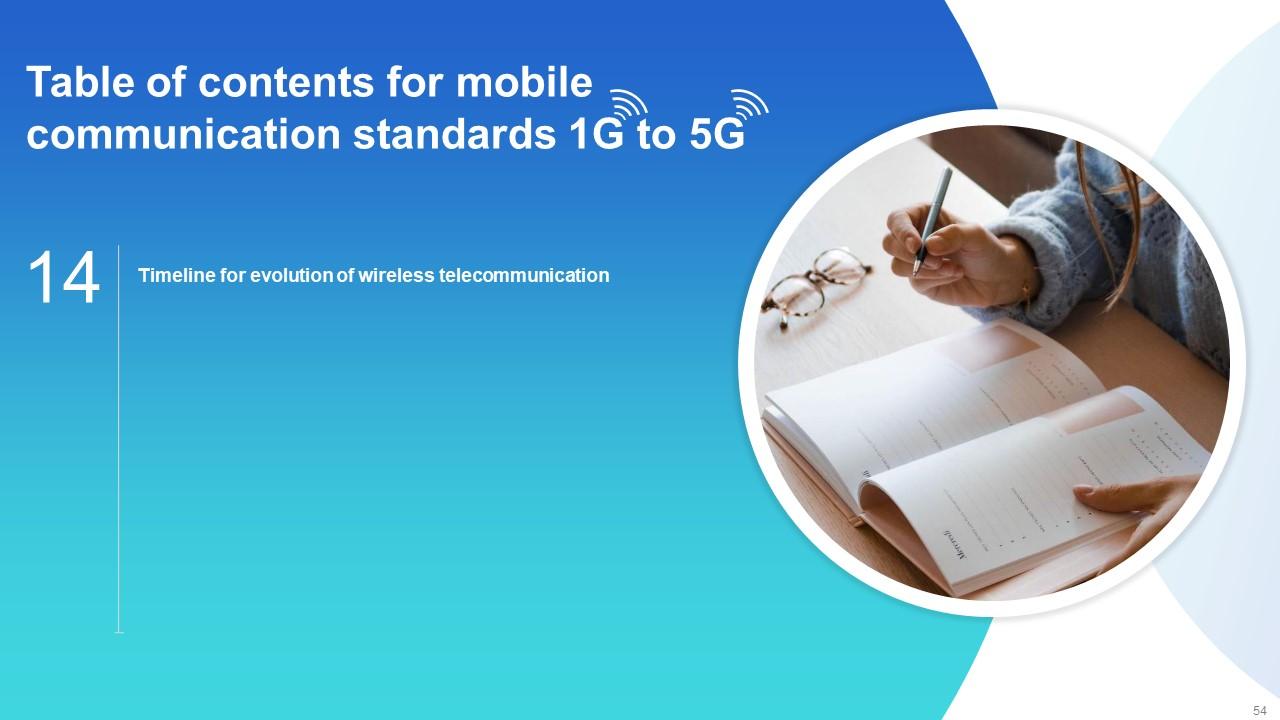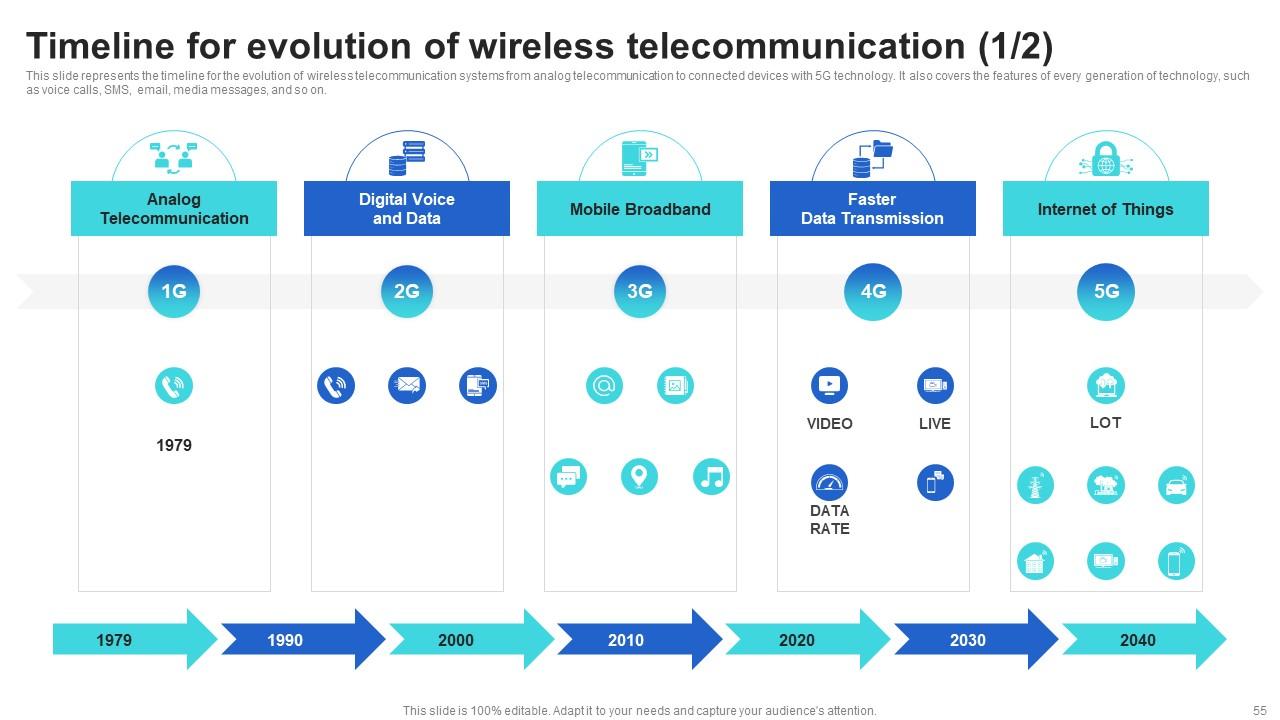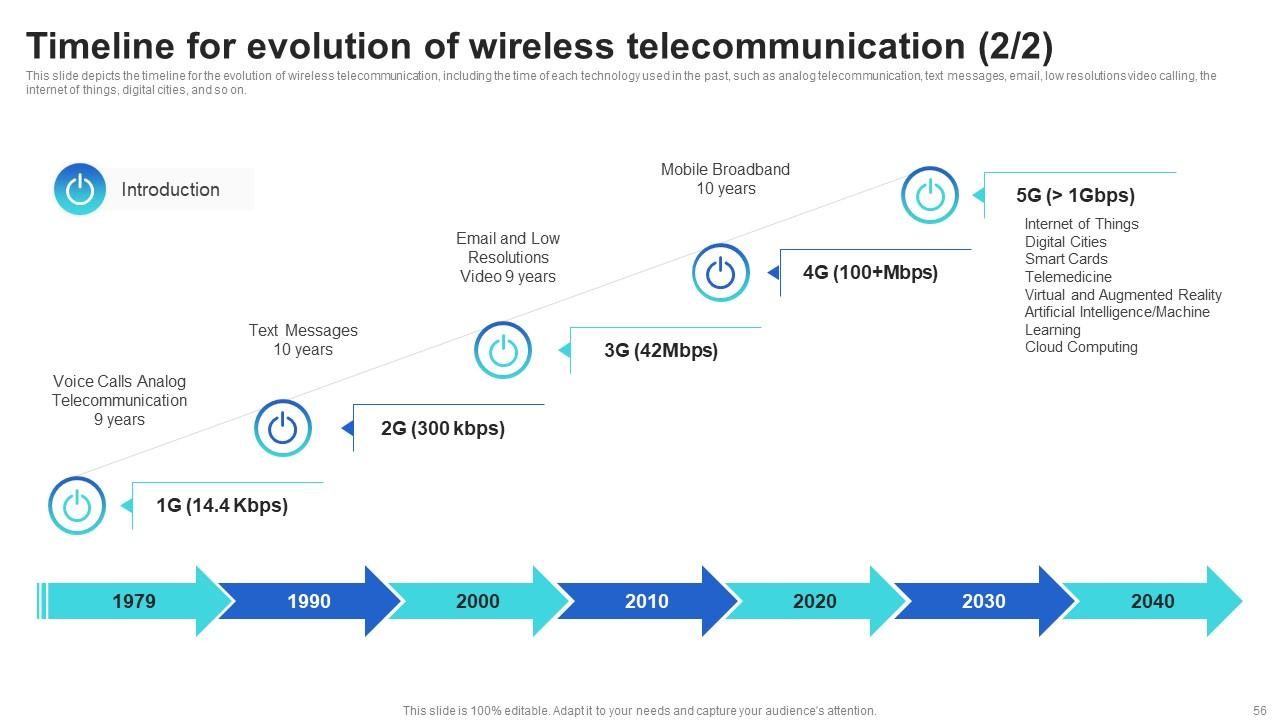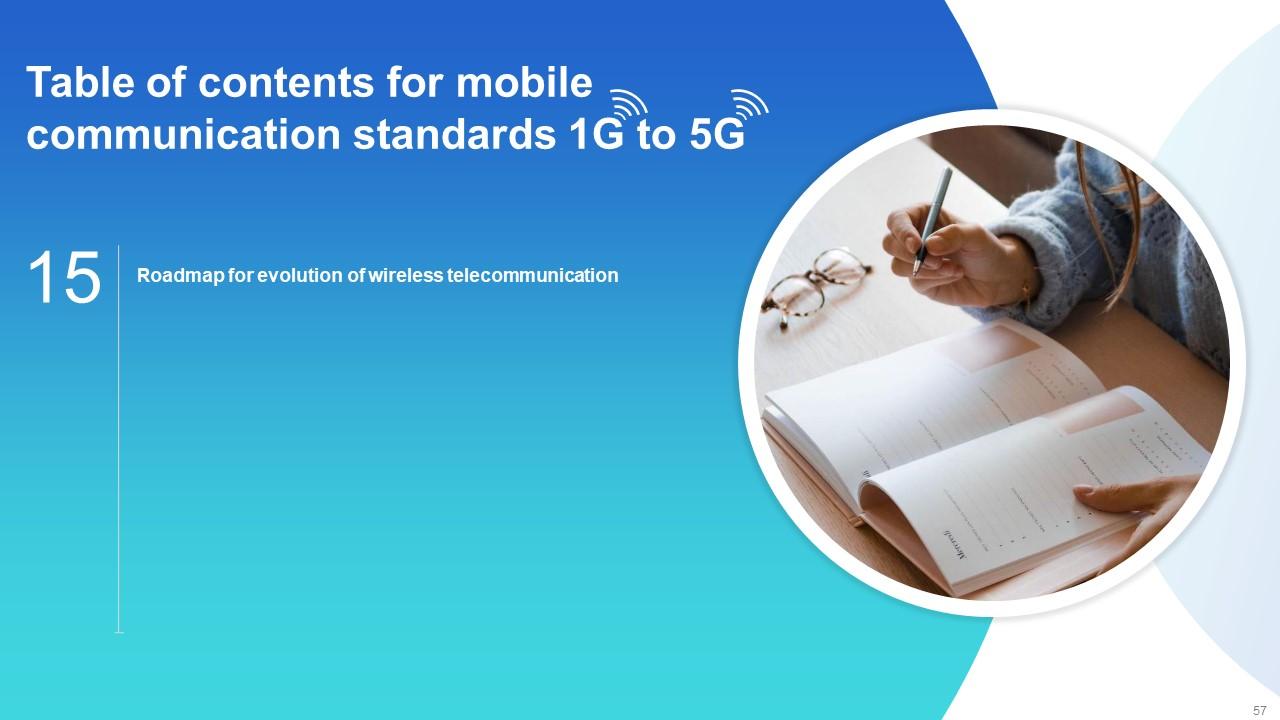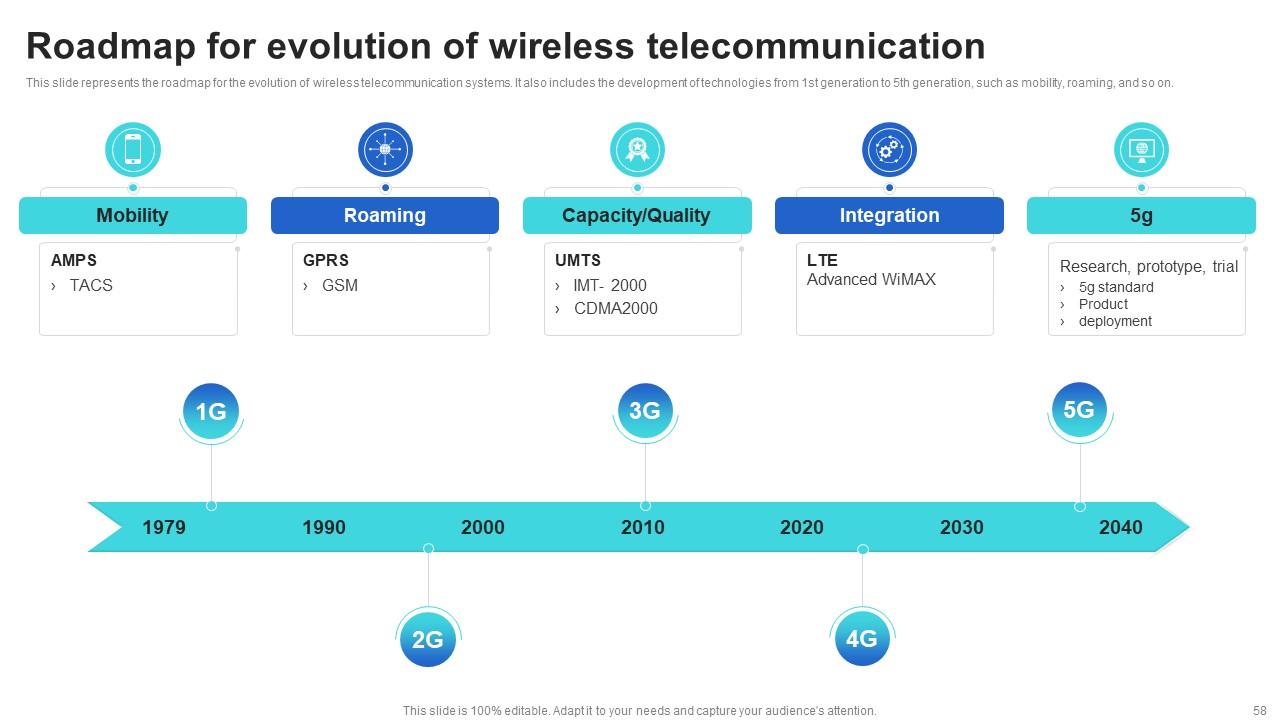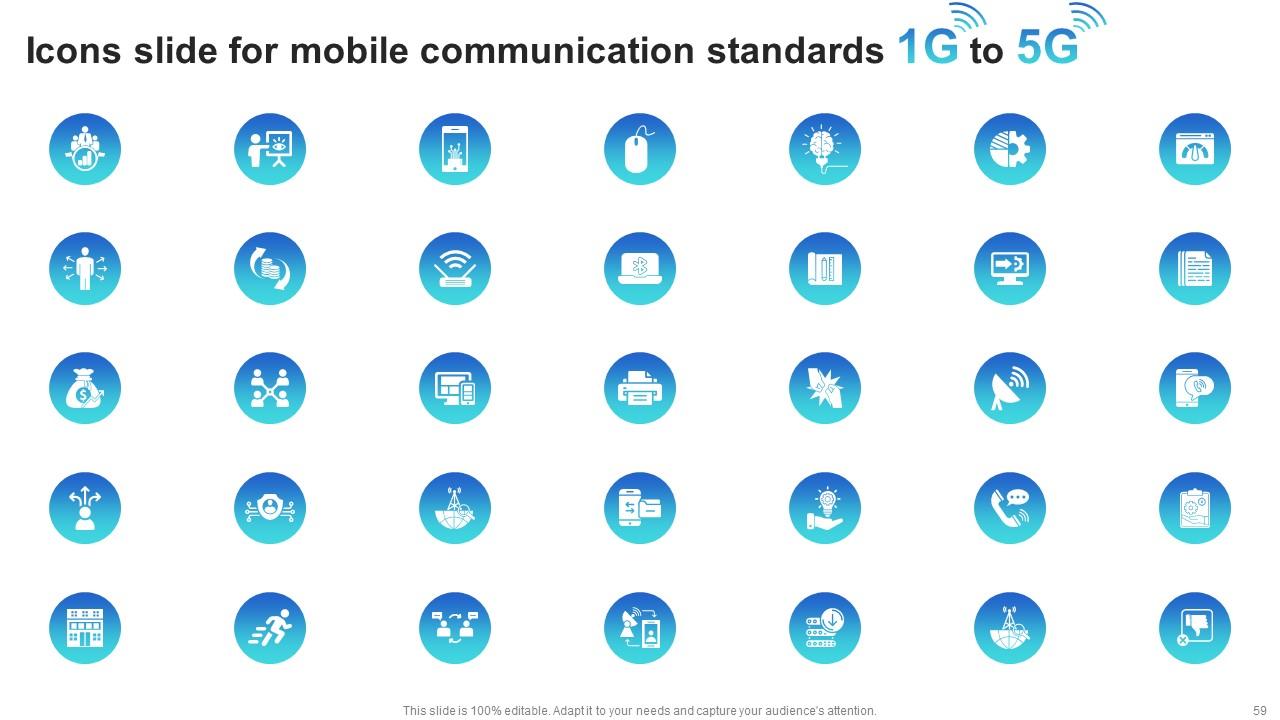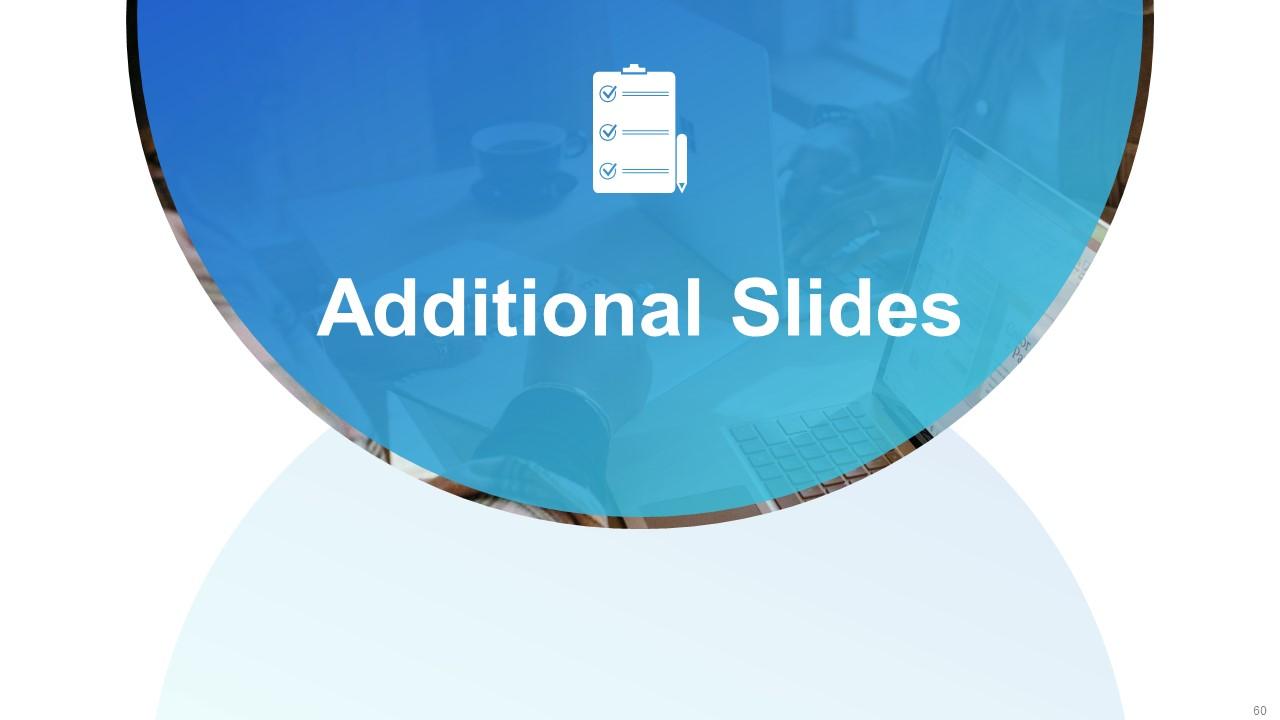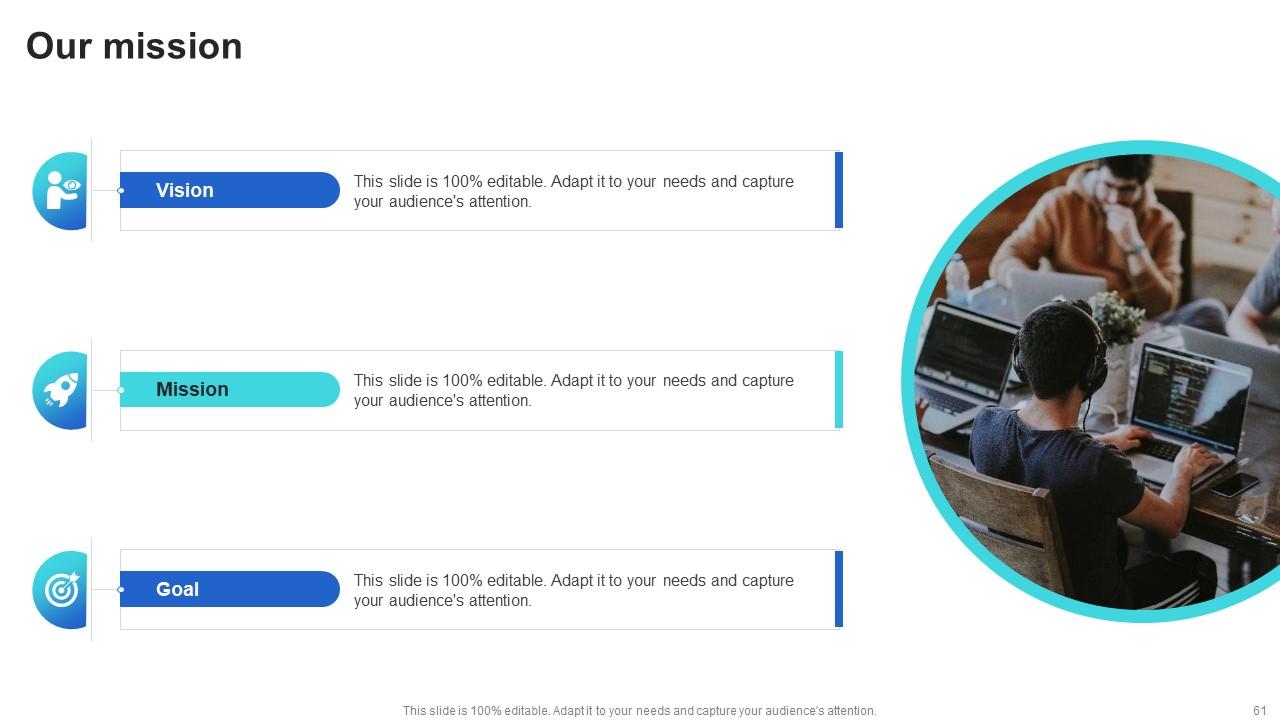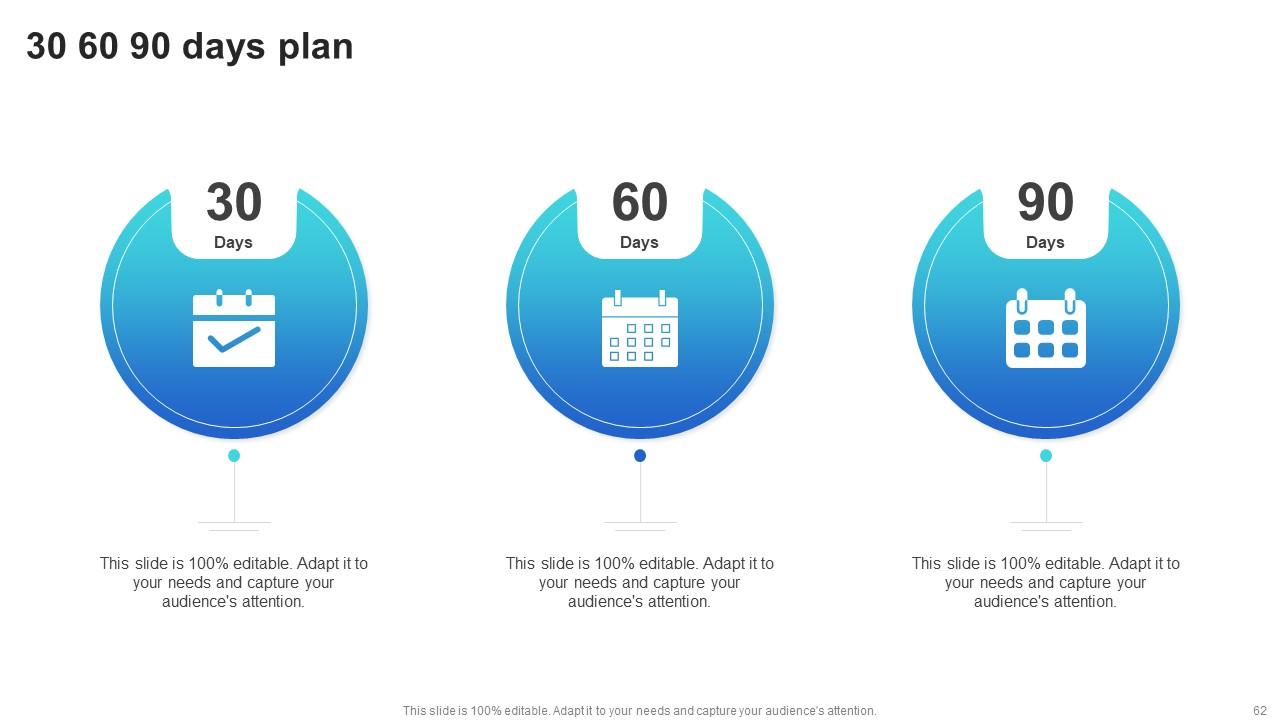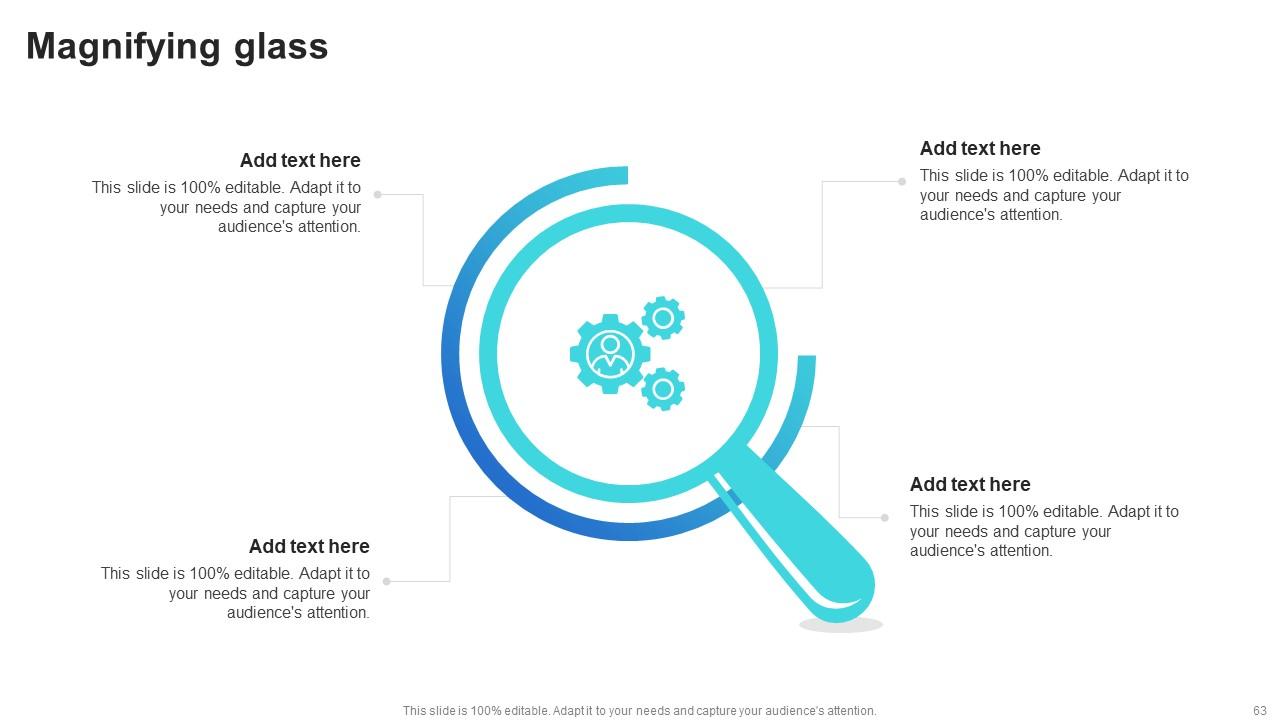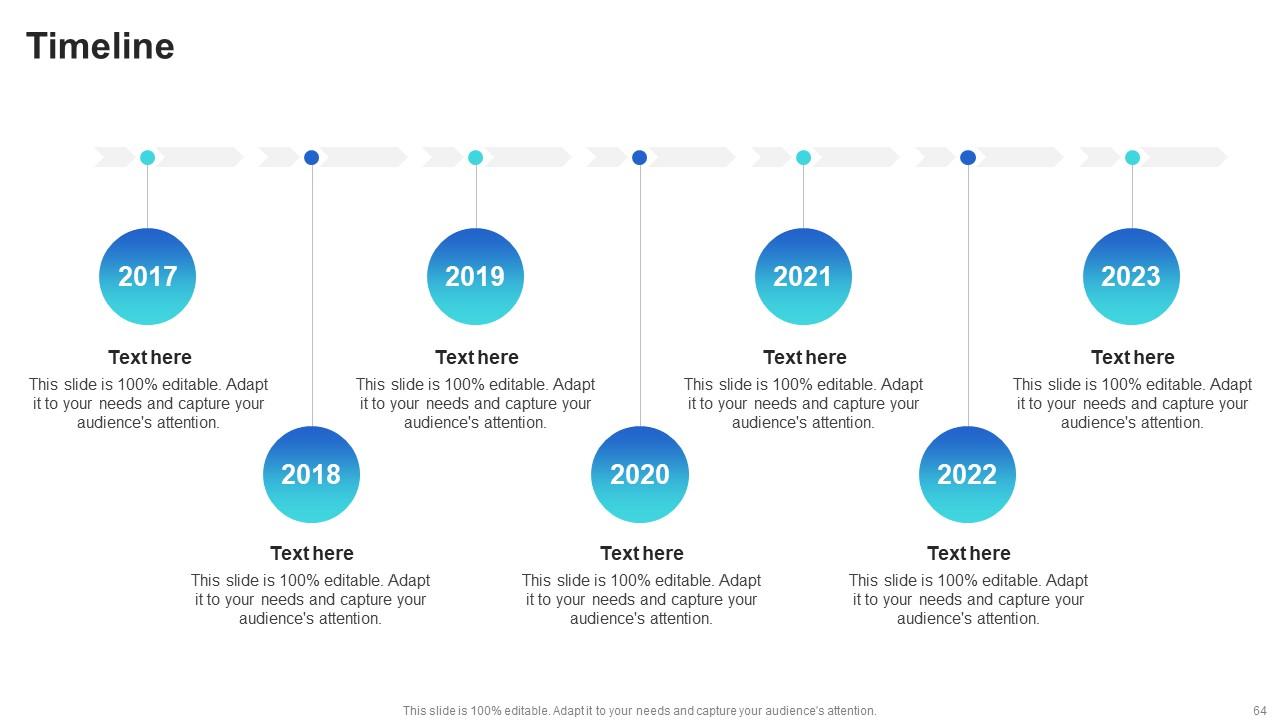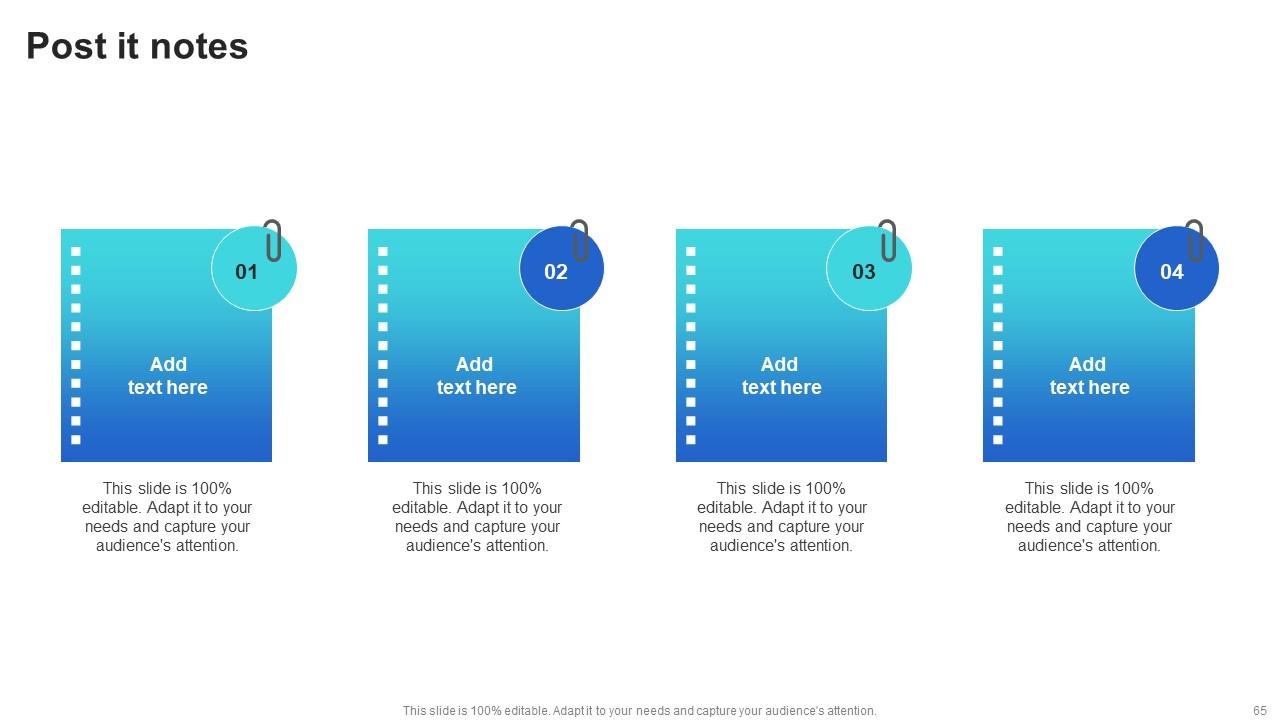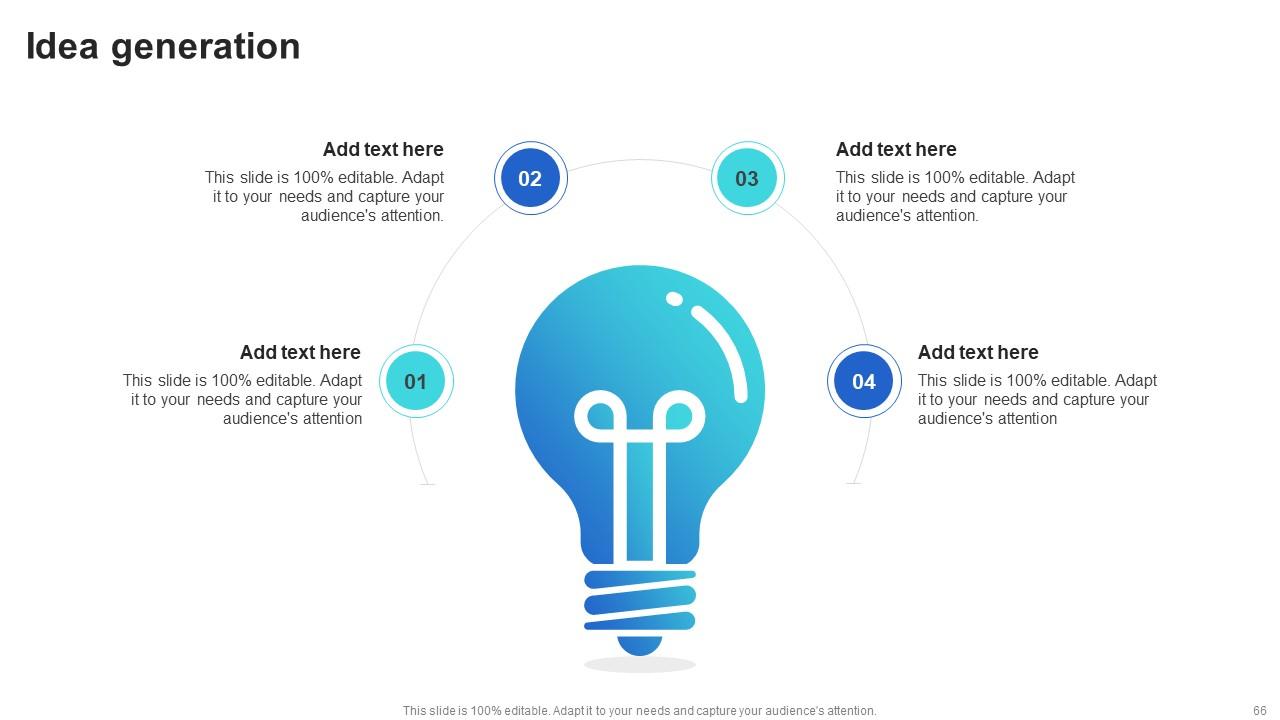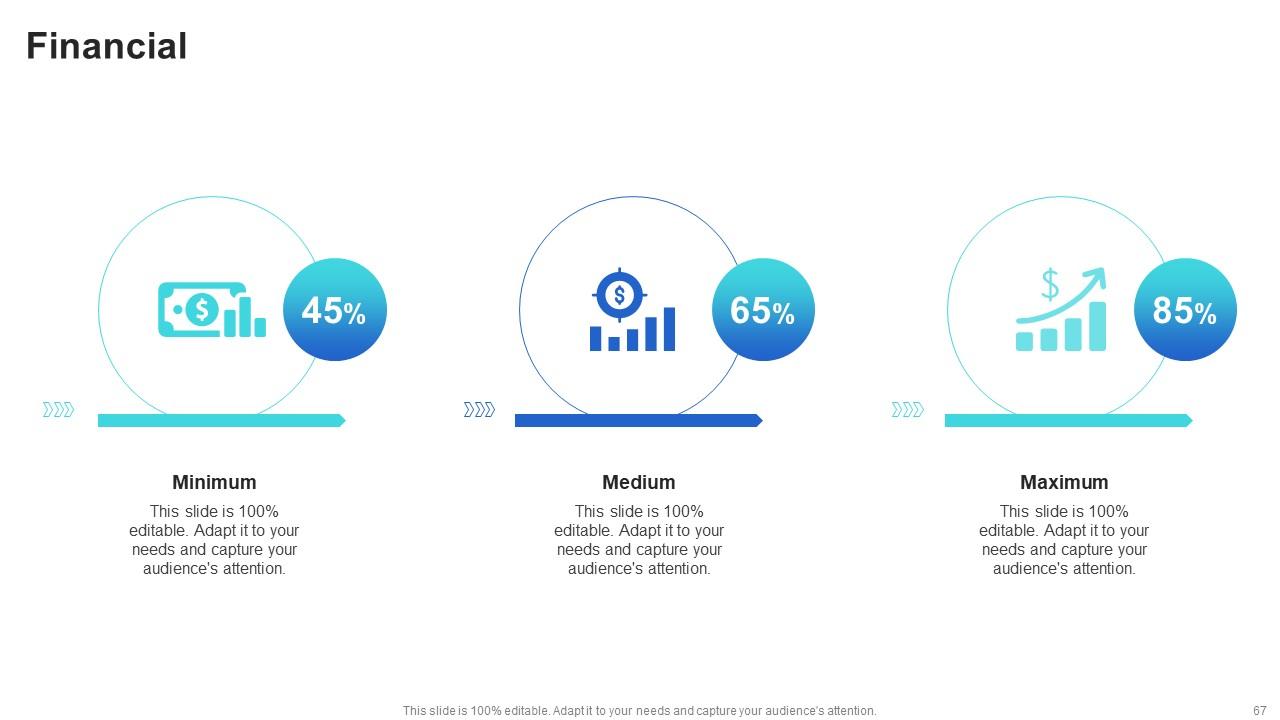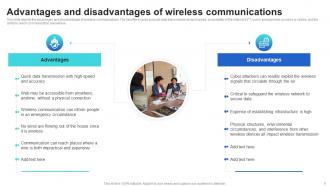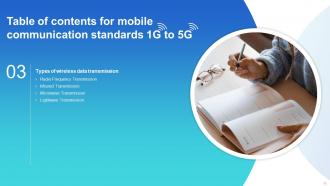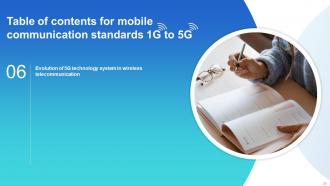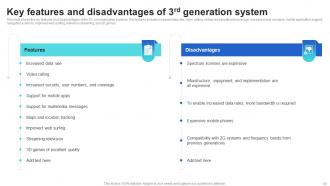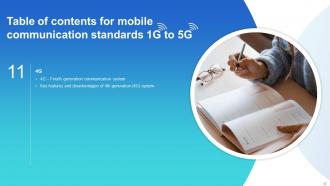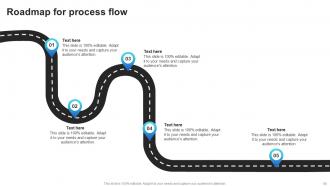Mobile Communication Standards 1G To 5G Powerpoint Presentation Slides
This PowerPoint presentation Mobile Communication Standards 1G to 5G gives a brief idea about the history and invention of the first mobile phone and how 5G technology has evolved from generation to generation over time. In this Mobile Communication Standards 1G to 5G PowerPoint Presentation, we have covered the evolution of the 5G technology system in wireless telecommunication, including an overview, of its key features, and disadvantages. In addition, PPT contains an overview of the 2nd generation communication system that is also known as GSM, its key features, disadvantages, and an overview of 2.5G and 2.75G systems. Also, the Cell Phone Generation-1G to 5G PPT presentation includes an introduction to the 3rd generation communication system, followed by its key features, disadvantages, and 3.5G to 3.75G generation systems. Moreover, the 1G to 5G Technology deck comprises the overview of 4G and 5G, including critical features, benefits, application areas, security features, and the current status of the 5G network rollout. Furthermore, this Mobile Communication Standards 1G to 5G template compares 1st generation to 5th generation telecommunication technologies, a timeline, and a roadmap for the evolution of wireless telecommunication. Download our 100 percent editable and customizable template, which is also compatible with Google Slides.
This PowerPoint presentation Mobile Communication Standards 1G to 5G gives a brief idea about the history and invention of ..
- Google Slides is a new FREE Presentation software from Google.
- All our content is 100% compatible with Google Slides.
- Just download our designs, and upload them to Google Slides and they will work automatically.
- Amaze your audience with SlideTeam and Google Slides.
-
Want Changes to This PPT Slide? Check out our Presentation Design Services
- WideScreen Aspect ratio is becoming a very popular format. When you download this product, the downloaded ZIP will contain this product in both standard and widescreen format.
-

- Some older products that we have may only be in standard format, but they can easily be converted to widescreen.
- To do this, please open the SlideTeam product in Powerpoint, and go to
- Design ( On the top bar) -> Page Setup -> and select "On-screen Show (16:9)” in the drop down for "Slides Sized for".
- The slide or theme will change to widescreen, and all graphics will adjust automatically. You can similarly convert our content to any other desired screen aspect ratio.
Compatible With Google Slides

Get This In WideScreen
You must be logged in to download this presentation.
PowerPoint presentation slides
Deliver this complete deck to your team members and other collaborators. Encompassed with stylized slides presenting various concepts, this Mobile Communication Standards 1G To 5G Powerpoint Presentation Slides is the best tool you can utilize. Personalize its content and graphics to make it unique and thought-provoking. All the sixty nine slides are editable and modifiable, so feel free to adjust them to your business setting. The font, color, and other components also come in an editable format making this PPT design the best choice for your next presentation. So, download now.
People who downloaded this PowerPoint presentation also viewed the following :
Content of this Powerpoint Presentation
Slide 1: This slide displays the title Mobile Communication Standards 1G to 5G.
Slide 2: This slide displays the title Agenda for mobile communication standards 1G to 5G.
Slide 3: This slide exhibit table of content.
Slide 4: This slide exhibit table of content.
Slide 5: This slide exhibit table of content- Wireless communication overview and importance.
Slide 6: This slide outlines the introduction of wireless communication technology, including the types of data transmissions.
Slide 7: This slide depicts the importance of wireless communication technology.
Slide 8: This slide exhibit table of content- Wireless communication advantages and disadvantages.
Slide 9: This slide depicts the advantages and disadvantages of wireless communications.
Slide 10: This slide talks about the various advantages of wireless communication technology.
Slide 11: This slide exhibit table of content- Types of wireless data transmission.
Slide 12: This slide represents an overview of radio frequency, including the technology used for information transmission.
Slide 13: This slide describes the overview of infrared radiation wireless transmission, that is, electromagnetic radiation with longer wavelengths compared to visible light.
Slide 14: This slide represents the overview of microwave transmission that uses two different methods such as the satellite method and the terrestrial method.
Slide 15: This slide outlines the overview of light wave transmission that ranges from infrared to ultraviolet radiations.
Slide 16: This slide exhibit table of content- Types of wireless communication technologies.
Slide 17: This slide represents the radio communication type of wireless communication technology.
Slide 18: This slide depicts the satellite communication type of wireless technology, comprising space and ground segments.
Slide 19: This slide talks about the cellular communication type of wireless technology.
Slide 20: This slide represents the Wi-Fi communication type of wireless technology.
Slide 21: This slide talks about the overview of Bluetooth communication type of wireless technology that enables data transmission by connecting two devices.
Slide 22: This slide exhibit table of content- History and invention of mobile phone.
Slide 23: This slide represents the overview of wireless technology history from 1895 to the 19th century.
Slide 24: This slide describes how evolution began after two-way wireless communication and the invention of the first mobile phone that was mounted on automobiles and trucks.
Slide 25: This slide exhibit table of content- Evolution of 5G technology system in wireless telecommunication.
Slide 26: This slide depicts the evolution of the 5G technology system from 1G to 5G from 1979 to 2019.
Slide 27: This slide exhibit table of content- OG.
Slide 28: This slide represents the overview of the 0th generation of mobile communication systems.
Slide 29: This slide represents the overview of the 0.5G wireless communication system invented after the 0th generation of wireless technology.
Slide 30: This slide exhibit table of content- 1G.
Slide 31: This slide talks about the overview of the first-generation mobile communication system launched by Nippon Telephone and Telegraph Company.
Slide 32: This slide outlines the key features or technologies of 1st generation systems.
Slide 33: This slide shows the disadvantages of 1st generation systems.
Slide 34: This slide exhibit table of content- 2G.
Slide 35: This slide represents the overview of the 2nd generation communication system.
Slide 36: This slide covers the disadvantages of 2G systems, including low data rate, restricted mobility, limited functionality, and the limited number of users.
Slide 37: This slide represents the overview of 2.5G and 2.75G communication systems, including the technologies deployed in these systems.
Slide 38: This slide exhibit table of content- 3G.
Slide 39: This slide depicts an overview of the 3G communication system and the technology used.
Slide 40: This slide shows the key features and disadvantages of the 3G communication systems.
Slide 41: This slide represents the overview of 3.5G and 3.75G communication systems.
Slide 42: This slide exhibit table of content- 4G.
Slide 43: This slide represents the 4th generation communication system, an advanced version 3G network deployed by IEEE.
Slide 44: This slide depicts the key features and disadvantages of the fourth-generation communication system.This slide exhibit table of content.
Slide 45: This slide exhibit table of content- Future of wireless telecommunication
Slide 46: This slide describes the 5th generation communication system overview where LTE advanced networks will be upgraded to 5G networks.
Slide 47: This slide represents the critical features and disadvantages of 5th generation technology.
Slide 48: This slide represents the benefits and application areas of 5th generation communication technology for industries, businesses, and consumers.
Slide 49: This slide depicts the security features included in 5th generation technology.
Slide 50: This slide represents the current status of Germany's 5G network rollout since 2019 and the advancement of independent transmission towers and antennas of 5G.
Slide 51: This slide describes the overview of Li-Fi wireless communication technology.
Slide 52: This slide exhibit table of content- Comparison of 1st generation to 5th generation telecommunication technologies.
Slide 53: This slide represents the difference between various wireless communication technologies, such as 1st generation to 5th generation.
Slide 54: This slide exhibit table of content- Timeline for evolution of wireless telecommunication.
Slide 55: This slide represents the timeline for the evolution of wireless telecommunication systems from analog telecommunication to connected devices with 5G technology.
Slide 56: This slide depicts the timeline for the evolution of wireless telecommunication, including the time of each technology used in the past.
Slide 57: This slide exhibit table of content- Roadmap for evolution of wireless telecommunication.
Slide 58: This slide represents the roadmap for the evolution of wireless telecommunication systems.
Slide 59: This slide display Icons slide for mobile communication standards 1G to 5G.
Slide 60: This slide presents title for additional slides.
Slide 61: This slide presents your company's vision, mission and goals.
Slide 62: This slide depicts 30-60-90 days plan for projects.
Slide 63: This slide display Magnifying glass.
Slide 64: This slide exhibits yearly timeline of company.
Slide 65: This slide depicts posts for past experiences of clients.
Slide 66: This slide exhibits ideas generated.
Slide 67: This slide display Financial.
Slide 68: This slide display Roadmap for process flow.
Slide 69: This is thank you slide & contains contact details of company like office address, phone no., etc.
Mobile Communication Standards 1G To 5G Powerpoint Presentation Slides with all 74 slides:
Use our Mobile Communication Standards 1G To 5G Powerpoint Presentation Slides to effectively help you save your valuable time. They are readymade to fit into any presentation structure.
FAQs
Wireless communication technology refers to the transfer of information or data from one point to another without using any physical cable or wire. Instead, it uses radio waves, microwaves, infrared waves, or light waves to transmit signals.
The advantages of wireless communication include portability, mobility, flexibility, convenience, and cost-effectiveness. On the other hand, the disadvantages of wireless communication include security risks, limited range, interference from other signals, and the need for power sources.
There are several types of wireless data transmission, including radio frequency, infrared radiation, microwave transmission, and lightwave transmission. Each type uses different technologies to transmit data wirelessly.
5G technology is the fifth generation of wireless communication technology that provides high-speed data transfer rates, lower latency, and higher capacity. It uses advanced technologies such as millimetre waves, small cells, massive MIMO (Multiple-Input Multiple-Output), and beamforming to enhance the speed and reliability of wireless communication.
The evolution of wireless telecommunication systems began in the late 19th century with the invention of two-way wireless communication. It progressed through several generations, including 1G, 2G, 3G, 4G, and 5G. Today, wireless telecommunication technology continues to advance with the development of new technologies and applications.
-
Thanks for all your great templates they have saved me lots of time and accelerate my presentations. Great product, keep them up!
-
SlideTeam is my go-to resource for professional PPT templates. They have an exhaustive library, giving you the option to download the best slide!


